Temperature & Humidity Requirements for Paper Storage

Old family records, legal documents, your kids' best finger paintings – if you have important papers that you want to preserve for decades to come, creating the right storage conditions is critical. Paper can become brittle, be destroyed by mildew or be eaten by insects if certain temperature and humidity requirements aren't met. That doesn't mean you necessarily have to cart your boxes of important papers to a climate-controlled storage space. There's probably at least one area of your home where the conditions are right for paper storage.
Advertisement

Temperature Requirements for Paper Storage
Video of the Day
Paper and photos do best in cool temperatures. The maximum recommended temperature for paper storage is 75 degrees Fahrenheit, though some experts recommend a high temperature of 65 degrees.
It's probably not a disaster if papers are stored somewhere that occasionally gets a little warmer, but ideally, they'll be kept at lower temperatures for long-term storage. Heat accelerates the rate at which paper and ink break down. High temperatures also tend to encourage insect activity.
If your family records include photography or film materials, like acetate negatives, color negatives and slides, these items may need to be kept in cold storage (a freezer) for long-term protection.
Humidity Requirements for Paper Storage
Humidity control for paper storage is critical because the effect of humidity on paper can permanently ruin your important documents. If papers are stored someplace too humid, they may be destroyed by mold and/or insects. High humidity can also cause papers to permanently change texture and become wavy instead of flat. If the humidity is too low, paper can dry out and become brittle.
Choose a storage space where relative humidity remains below 65 percent but doesn't drop below 15 percent. Ideally, aim for the range of 30 to 50 percent relative humidity. Install a hygometer (humidity gauge) in the room where you store important papers and use a dehumidifier if necessary to keep the space within that range.
Other Factors for Paper Storage
Beyond temperature and humidity requirements, think about controlling three other threats to your important papers: insects, light and water.
Even if you get the temperature and humidity conditions just right, insects may still find and feast on your stored papers. Silverfish and certain beetles are very attracted to paper and can do a lot of damage in a short time. Considering you probably don't check on your stored documents very often, insects can destroy an entire box of paper before you discover the problem. Store important papers in plastic storage boxes with locking lids to keep out insects and make sure there are no food sources nearby that could attract insects to the area. Choose storage boxes large enough that every paper can lay flat.
Prolonged light exposure can also damage paper, causing discoloration and fading. Keep storage boxes in a dark place, like a closet, or toss a blanket over them if they're stored in a room with a window. Finally, think about flood risks. Don't store boxes of important records on the floor, where they could be damaged if a pipe breaks. Never store boxes of papers on a garage or basement floor where rainwater or melting snow could reach them. Keep storage boxes on shelves at least a few feet off the ground just to be safe. If you ever deal with flooding in the future, you'll have enough to deal with without mourning the loss of your most important papers.
- National Archives: Storing Family Papers and Photographs
- Smithsonian Institution Archives: Environment
- CFW Environmental: Paper Storage Temperature and Humidity Control
Report an Issue
Screenshot loading...
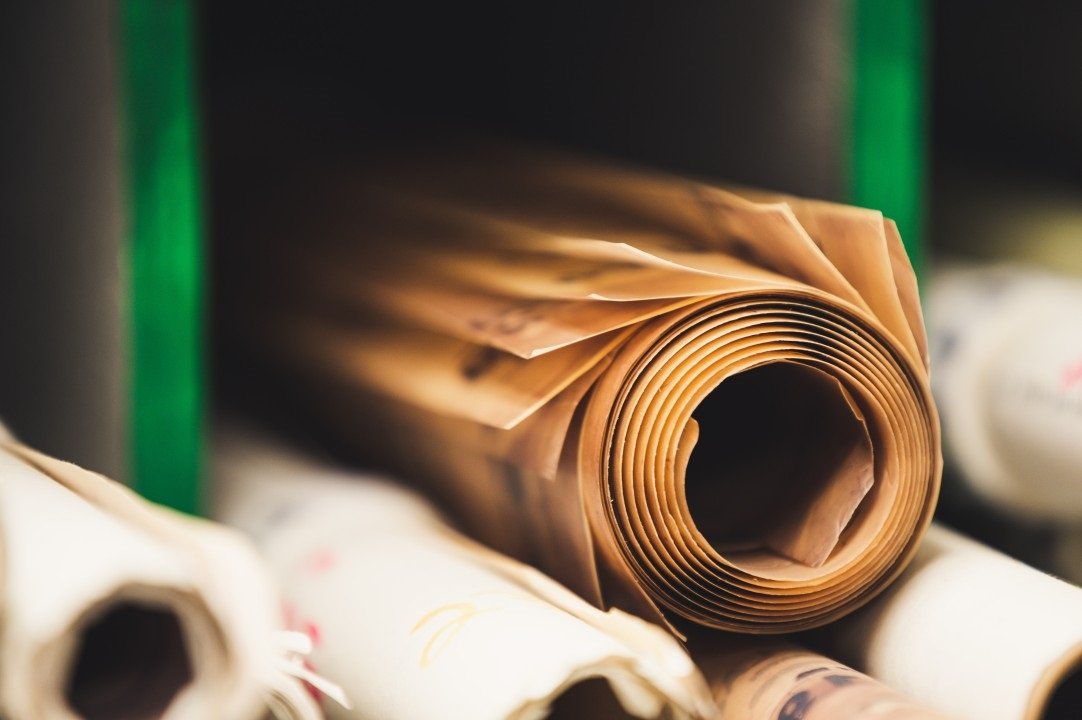
A Guide to Document and Paper Storage and Humidity Control
Archives, documents and paper storage.
If your organisation stores paper documents, it’s vital to consider how seasonal humidity and temperature fluctuations can affect document preservation. Without proper climate control, ambient temperature can negatively affect and damage documents.
Damaging Effects of Humidity in Paper Storage
Many materials are more susceptible to moisture than they are to temperature. There is a direct correlation between high relative humidity (RH) and moisture damage to stored products, products like fiborous paper.
A large portion of Australia experiences high humidity in summer. When we measure humidity, we are talking about relative humidity (RH). In a nutshell RH refers to the amount of moisture in the air. The hotter the air, the more water it can contain.

Book and Archive Storage
Books, documents, and other archival material are hygroscopic, meaning they absorb and release moisture. The materials expand and contract depending on the temperature and relative humidity. The more environmental changes the documents experience, the more vulnerable they are to accelerated deterioration.

Paper Storage
Paper is a fibrous and naturally hygroscopic, therefore vulnerable to temperature and humidity changes. In an attempt to reach a balance with its surroundings, paper collects and releases moisture, which can affect its shape, dimensions, strength, and performance.
If the paper neither absorbs nor loses moisture, then it remains in its optimal state.
Controlling Humidity when Storing Paper and Other Moisture Sensitive Material
Sometimes indoor humidity is higher than it is outside. This increased indoor humidity can be caused by a variety of, or culmination of several factors. Poor ventilation, overworking AC with an inadequate outlet, walls or windows not properly sealed allowing moisture to invade.
Specialised climate conditions are required when storing organic materials. Humidity, temperature, and pollutants are important factors to consider when archiving.
When it comes to paper storage, maintaining a constant temperature and relative humidity level is important. However not having the ideal level is better than allowing the environmental conditions to vary and fluctuate.
Temperature and Humidity
The lower the temperature the longer your items will last, because cooler temperatures slow the rate of chemical decay and reduce insect activity. Keep the temperature below 22° C.
Keep the RH below 55% to prevent mould growth and reduce insect activity.
Avoid very low relative humidity because RH below 15% can cause brittleness.
It is commonly acknowledged by preservation experts, that inappropriate water vapour in the air is a real threat to the preservation of documents, artefacts, and relics. Once damaged, the items will never return to their former condition.
The ideal temperature for paper storage varies between 18° and 22° C and relative humidity (RH) should sit between 40 and 55%.
If we consider that relative humidity (RH) is generally quite high throughout Australia, in some cases reaching 65 to 80%RH, then relative humidity is an important consideration when storing hygroscopic and moisture sensitive material.
Other Storage Considerations
Dust free area
Good air circulation
Weightbearing floors
Tall ceilings
Air filtration system
Smoke detectors
Moisture detectors
Fire extinguisher
An area that is not under water pies
Shelves that are deep enough to lie documents flat
Shelves that are deep enough for the storage boxes
The area is carpet free
Storage Location
When choosing a storage location for archives, cardboard boxes and paper storage, avoid basements as these areas are more susceptible to water related damage and generally the temperature in these areas can be either higher or lower than the temperature within the rest of the location. Basements can also have poor ventilation.
The ideal storage space will be easy to clean and maintain, have sufficient space, and make retrieving documents easy.
The floors should be able to withstand shelves full of documents without causing structural damage. If the area has overhead water pipes, position the shelves so the pipes are over the aisles and not the shelves
Storage Handling
The best storage materials do not omit volatile organic compounds (VOC) and are acid free. Boxes are great for keeping documents dust free and out of the lights.
When labelling files use a pencil instead of a pen. Pens tend to fade and the ink can also bleed onto paper
Air quality is also an important factor for paper storage. It’s crucial to ensure proper ventilation with the storage area to prevent harmful compounds from building up. Harmful compounds such as dust, nitrogen oxide, ozone, formaldehyde, sulphur dioxide, volatile organic compounds and carbon monoxide.
A Well-Rounded Solution for Paper Storage
There is an easy solution that once set up, frees you from constantly monitoring your indoor climate. Many use heaters, however, this is costly and increases your energy consumption considerably. N.B. While heaters may reduce the relative humidity of a room, it does nothing to remove the moisture from the air.
Depending on the room's natural climate and the product being stored, either a desiccant or refrigerant (mechanical) dehumidifier will create and maintain the ideal climate for your products.
Refrigerant dehumidifiers work best in spaces where the temperature is at 20° C and above and humidity levels of 50% and above. They work on the humidity of the room and run when the humidity is above its set point.
Desiccant Dehumidifiers are ideal for controlling humidity and work well below 20° C.
If indoor temperature is not your concern but you require low humidity, then a desiccant dehumidifier can create and maintain below 50% relative humidity regardless of the time of year.
The Best Humidity Controlled Storage
To find out more about humidity controlled storage solutions and the variety of preservation and storage applications Humiscope has helped. Please visit our Storage and Preservation page or contact us for an obligation free chat about the HVAC technology we specialise in.
Master your indoors
Little Household Additions For Long-Lasting Happiness
- Cookware & Bakeware
- Food Storage Solutions
- Kitchen Furniture & Decor
- Kitchen Gadgets & Utensils
- Kitchen Renovation Ideas
- Small Kitchen Appliances
- Bathroom Accessories
- Bathroom Fixtures
- Bathroom Furniture
- Bedroom Furniture
- Kitchen Furniture
- Living Room Furniture
- Office Furniture
- Outdoor Furniture
- Interior Design Trends
- Space-Saving Solutions
- Garden Tools & Equipment
- Home DIY & Maintenance
- Landscaping Ideas
- Outdoor Entertaining
- Outdoor Lighting
- Outdoor Recreation & Activities
- Outdoor Structures
- Patio & Deck Designs
- Pet & Wildlife Care
- Plant Care & Gardening Tips
- Pool & Spa Care
- Seasonal & Event Decor
- Energy-Efficient Appliances
- Home Entertainment Systems
- Home Office Tech
- Latest Tech Trends in Home Improvement
- Security & Surveillance
- Smart Home Devices
- DIY Projects & Ideas
- Flooring & Tiling
- Home Renovation Guides
- Painting & Decorating
- Plumbing & Electrical
- Tools & Equipment
- Appliance Maintenance & Repair
- Bathroom Appliances
- Cleaning Appliances
- Heating & Cooling
- Home Automation Appliances
- Kitchen Appliances
- Laundry Appliances
- Lighting Appliances
- Other Appliances
- Air Quality & Filtration
- Ergonomic Home Solutions
- Family & Pet-Friendly Home Design
- Healthy Home Cooking
- Home Fitness Equipment
- Mindfulness & Relaxation Spaces
- Building Materials
- Construction Techniques
- Electrical and Plumbing Systems
- Hand & Power Tools
- Professional Contractor Advice
- Safety Gear & Equipment
- Worksite Management
- Energy-Saving Tips
- Home Insulation & Ventilation
- Solar Power Solutions
- Child & Elderly Safety at Home
- Emergency Preparedness
- Home Maintenance Checklists
- Pest Control Solutions
- Safety Equipment & Products
- Seasonal Home Care
- Budgeting & Planning Guides
- Buying Guides
- How-To Guides
- Maintenance & Care Guides
- Product Reviews
- Style & Inspiration Guides
- Bathroom Storage Ideas
- Closet & Wardrobe Organization
- Decluttering Tips & Tricks
- Garage Storage Solutions
- Kitchen Organizing Tools
- Living Room Organization
- Office & Desk Organizers
- Eco-Friendly Products
- Home Hacks & Tips
- Personalized Home Decor
- Seasonal & Holiday Decor
- Specialized Home Improvement Topics
- Unique Home Solutions
- How to Store
Home > Articles > How To Store Printer Paper
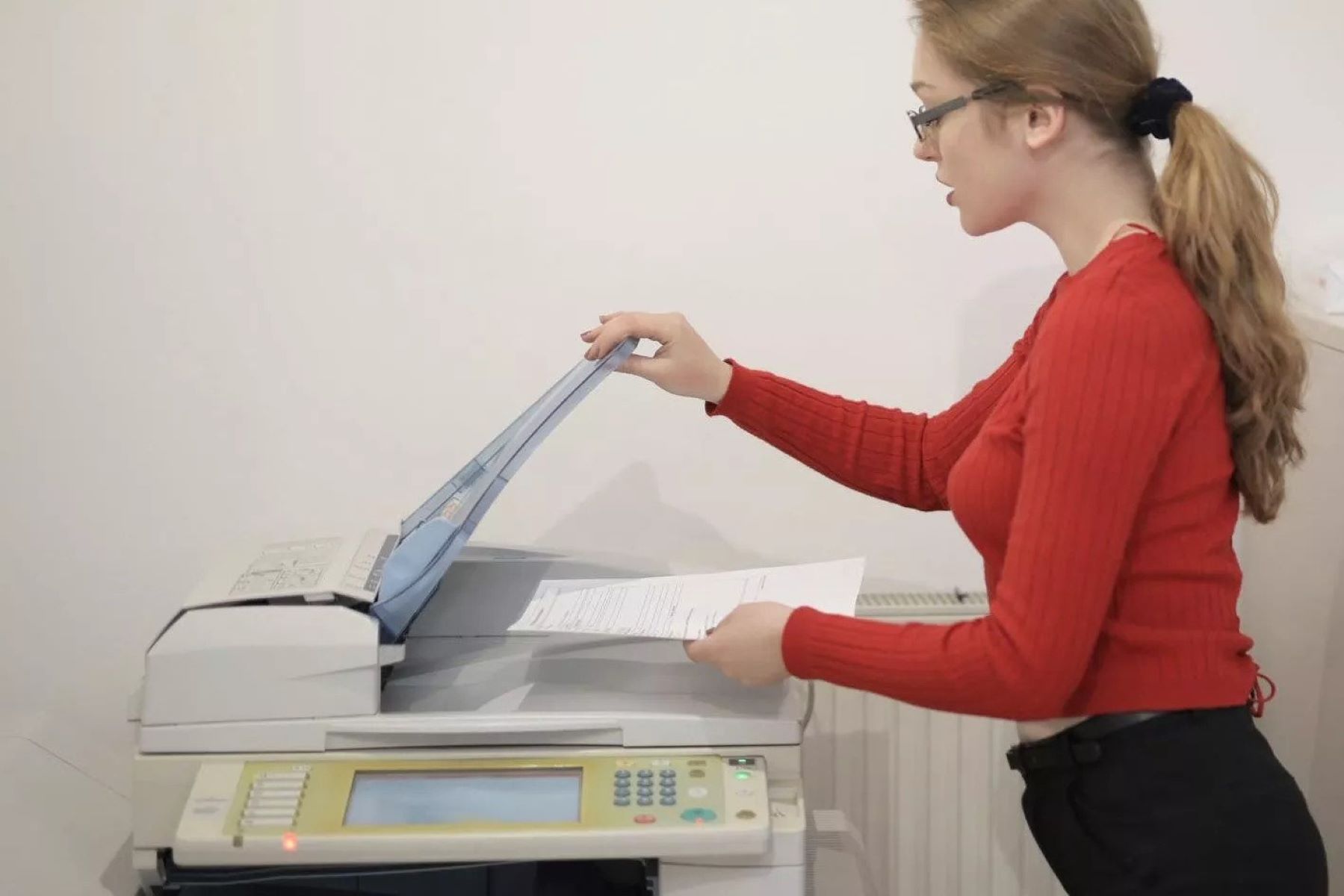
How To Store Printer Paper
Modified: January 20, 2024
Written by: Daniel Carter
Learn the best tips and tricks for storing printer paper and keeping it in pristine condition with our helpful articles.
- Storage & Organization
- How to store
- How To Store Stationery & Office Supplies
- Paper Storage Solutions
(Many of the links in this article redirect to a specific reviewed product. Your purchase of these products through affiliate links helps to generate commission for Storables.com, at no extra cost. Learn more )
- Introduction
Welcome to the comprehensive guide on how to store printer paper. Whether you’re a student, professional, or avid printer user, properly storing printer paper is crucial for maintaining its quality and longevity. By following the right storage techniques, you can ensure that your printer paper remains in pristine condition, free from damage or deterioration.
When it comes to storing printer paper, there are several factors to consider, such as the storage environment, protection against moisture and sunlight, prevention of dust accumulation, and proper air circulation. By implementing these strategies, you can extend the lifespan of your printer paper, preventing issues like jams, smudges, and wrinkles.
In this article, we will delve into the various aspects of storing printer paper. From choosing the right storage environment to organizing and protecting the paper, we will cover everything you need to know to keep your printer paper in the best possible condition.
So, if you’re ready to optimize your printer paper storage and ensure high-quality printouts every time, let’s dive in!
Key Takeaways:
- Properly storing printer paper is crucial for maintaining quality, preventing damage, and ensuring optimal printouts. Factors such as moisture control, protection from sunlight, and systematic organization play a key role in preserving the paper’s integrity.
- Implementing measures to protect printer paper from moisture, sunlight, dust, and debris accumulation, as well as efficient labeling and inventory tracking, can maximize the lifespan of the paper, maintain its quality, and achieve consistent, high-quality printouts.
Read more : How To Put Sublimation Paper In Printer
- Importance of Properly Storing Printer Paper
Properly storing printer paper is essential for several reasons. First and foremost, it helps maintain the quality of the paper, ensuring that it remains in pristine condition for optimal printouts. When printer paper is exposed to unfavorable conditions, it can absorb moisture, become wrinkled, or accumulate dust, leading to poor print quality and potential damage to your printer.
Apart from maintaining paper quality, proper storage also helps prevent paper jams. When printer paper is stored improperly, it can stick together or bend, increasing the chances of jams during printing. Jams not only disrupt your workflow but can also cause damage to your printer’s components, leading to costly repairs.
Additionally, properly stored printer paper has a longer shelf life. Whether you use it frequently or keep it for occasional use, ensuring that the paper remains in optimal condition prolongs its usability. By avoiding exposure to moisture, sunlight, and dust, you can prevent the paper from yellowing, curling, or becoming brittle with time.
Furthermore, proper storage helps save money. When printer paper becomes damaged or unusable due to improper storage, you’ll need to replace it more frequently, incurring unnecessary expenses. By taking the time to store your printer paper correctly, you can maximize its lifespan and minimize the need for frequent replacements.
Lastly, storing printer paper properly allows for efficient organization and easy access. When your paper is stored in a systematic manner, with clearly labeled and organized stacks, you can quickly locate the desired type and size of paper when needed. This helps streamline your printing process and saves valuable time and effort.
Overall, the importance of properly storing printer paper cannot be stressed enough. It ensures the longevity and quality of the paper, prevents paper jams, saves money, and promotes efficient organization. By implementing the guidelines for proper storage, you can optimize your printing experience and achieve consistently excellent printouts.
- Choosing the Right Storage Environment
Selecting the appropriate storage environment for your printer paper is a crucial step in ensuring its longevity and quality. The ideal storage environment should be free from excessive moisture, direct sunlight, extreme temperatures, and dust accumulation. Let’s explore each factor in detail:
1. Moisture: Printer paper is highly susceptible to moisture absorption, which can cause the paper to become wrinkled, wavy, or even moldy. To prevent this, choose a storage area with low humidity levels. Avoid storing paper in basements, bathrooms, or areas prone to water leaks. Instead, opt for a cool, dry room with proper ventilation.
2. Sunlight: Direct exposure to sunlight can lead to fading and discoloration of printer paper. UV rays can deteriorate the paper’s fibers and diminish its print quality. It’s best to store printer paper in a dark or dimly lit environment. If natural light is unavoidable, consider using UV-blocking film or covering the paper stacks with a light-resistant cloth or paper.
3. Temperature: Extreme temperatures can alter the properties of printer paper, causing it to warp, curl, or become brittle. Ideally, the storage area should maintain a temperature between 50-77°F (10-25°C). Avoid storing paper near heat sources, such as radiators or vents, as it can accelerate the aging process of the paper.
4. Dust and Debris: Printer paper easily attracts dust particles, which can affect print quality and clog printer mechanisms. Keep the storage area clean and free from dust by regularly dusting the shelves or containers where you keep the paper. Consider using protective covers, such as plastic sheet protectors or paper envelopes, to shield the paper from dust accumulation.
By considering these factors and choosing an appropriate storage environment, you can protect your printer paper from various potential issues, ensuring that it remains in perfect condition for printing.
- Preparing the Storage Area
Before you begin storing your printer paper, it’s important to properly prepare the storage area to provide the best conditions for the paper. Here are some essential steps to follow:
1. Clean the Storage Area: Start by cleaning the storage area thoroughly. Dust, dirt, and debris can easily accumulate on shelves or in drawers, so make sure to wipe down surfaces and remove any lingering particles. A clean storage area will help maintain the cleanliness of your printer paper.
2. Remove Moisture Sources: Identify and eliminate any potential sources of moisture in the storage area. Check for water leaks, damp walls, or any other signs of moisture. Addressing these issues will prevent moisture from seeping into your paper stacks and causing damage.
3. Use Proper Shelving or Containers: Invest in sturdy and reliable shelving units or containers to store your printer paper. Make sure they are clean, dry, and in good condition. Stack the paper in an upright position or place it horizontally, depending on the space available and the type of container you’re using.
4. Consider Air Circulation: Proper air circulation is crucial for maintaining the quality of your printer paper. Ensure that there is enough space between paper stacks and walls or other objects. This allows air to circulate freely, reducing the risk of moisture buildup or the paper becoming stagnant.
5. Avoid Overcrowding: Avoid overcrowding the storage area with too many paper stacks. Overcrowding restricts air circulation and increases the likelihood of damage during retrieval or adding new paper. Leave enough space between stacks for easy access and to prevent accidental damage.
6. Keep the Storage Area Pest-Free: Take precautions to keep pests, such as insects or rodents, out of the storage area. Use pest deterrents like traps or repellents if necessary, and regularly inspect the area for any signs of infestation.
By following these steps to prepare the storage area, you create an optimal environment for storing your printer paper. This will help maintain its quality and ensure that it remains in excellent condition for future use.
- Organizing and Stacking Printer Paper
Proper organization and stacking of printer paper are essential for easy access, efficient usage, and maintaining the integrity of the paper. Here are some tips for organizing and stacking your printer paper:
1. Sort by Type and Size: Start by sorting your printer paper by type and size. Group together different types of paper, such as plain, glossy, or photo paper, and separate them by their sizes, such as letter, legal, or A4. This will help you quickly locate the specific paper you need for your printing tasks.
2. Use Storage Containers: Consider using plastic or cardboard containers to store and organize your paper stacks. These containers can protect the paper from dust, moisture, and damage while keeping them in a neat and orderly arrangement. Label the containers for easy identification.
3. Utilize File Folders or Dividers: If you have a variety of paper types within a particular size category, use file folders or dividers within the containers to create separate sections. This will prevent different paper types from getting mixed up and make it easier to locate the specific paper you need.
4. Stack Paper Neatly: When stacking paper, ensure that the stacks are neat and even. Avoid leaning stacks against walls or leaning them at an angle, as this can cause the paper to become misshapen or bent. Stack paper vertically if possible, using dividers or sturdy supports to keep the stacks upright.
5. Rotate the Paper: To prevent the paper from becoming stuck or warped, periodically rotate the stacks. By rotating the paper, you ensure that the weight is distributed evenly across the stack, preventing any one section from bearing too much pressure for an extended period.
6. Maintain a Moderate Stack Height: Be mindful of how high you stack the paper to avoid excessive pressure on the bottom sheets. A moderate stack height allows for better air circulation and reduces the risk of the lower sheets becoming damaged or misshapen.
7. Keep Frequently Used Paper Separate: If you have paper that you use more frequently, consider keeping it in a separate, easily accessible container or on a designated shelf. This will save time and effort when you need to grab paper quickly for everyday printing needs.
By following these organization and stacking techniques, you can ensure that your printer paper is easily accessible, protected from damage, and remains in optimal condition for your printing needs.
Read more : How Thick Is Standard Printer Paper
- Protection against Moisture and Humidity
Moisture and humidity are common enemies of printer paper, as they can cause the paper to become wrinkled, warped, or even moldy. To protect your printer paper from moisture-related damage, here are some key measures you can take:
1. Choose a Low Humidity Storage Area: Opt for a storage area with low humidity levels. The ideal humidity range for storing printer paper is between 45% and 55%. High humidity levels can lead to increased moisture absorption and potential damage to the paper. Avoid storing paper in basements, garages, or areas prone to condensation.
2. Use Moisture-Absorbing Materials: Place moisture-absorbing materials, such as desiccant packs or silica gel packets, in the storage containers or on the shelves where you store your paper. These materials help absorb excess moisture from the air and create a drier environment for the paper.
3. Invest in a Dehumidifier: If you live in an area with consistently high humidity, consider investing in a dehumidifier for the storage area. The dehumidifier will help to maintain a controlled humidity level and create an optimal environment for storing printer paper.
4. Use Airtight Containers: Store your printer paper in airtight containers to provide an extra layer of protection against moisture. Ensure that the containers are properly sealed to prevent any moisture from seeping in. This is especially important if you live in a particularly humid climate.
5. Avoid Storage Near Water Sources: Keep printer paper away from water sources, such as sinks, pipes, or windows that may leak when it rains. Be cautious when selecting the storage area to minimize the risk of water damage to your paper.
6. Check for Signs of Moisture: Regularly inspect your stored printer paper for any signs of moisture, such as dampness, discoloration, or a musty odor. If you notice any of these signs, take immediate action to identify and eliminate the source of moisture to prevent further damage.
7. Monitor and Control Temperature: Temperature plays a role in regulating humidity levels. Aim to store your printer paper in a room with a moderate, stable temperature. Avoid storing paper near heat sources or in areas that experience extreme temperature fluctuations, as these can encourage condensation and moisture buildup.
By implementing these measures to protect your printer paper against moisture and humidity, you can safeguard its quality and longevity. Maintaining an optimal environment will ensure that your paper remains in excellent condition and produces high-quality printouts every time.
Store printer paper in a cool, dry place away from direct sunlight and moisture to prevent it from becoming wrinkled or damaged. Keep it in its original packaging or a resealable plastic bag to protect it from dust and dirt.
- Shielding from Direct Sunlight
Direct sunlight can have detrimental effects on printer paper, causing fading, discoloration, and deterioration of the paper fibers. To shield your printer paper from the harmful effects of sunlight, consider the following measures:
1. Choose a Dark or Dimly Lit Storage Area: When selecting a storage area for your printer paper, opt for a space that is kept dark or has limited exposure to natural light. This helps minimize the amount of sunlight that reaches the paper, reducing the risk of fading and discoloration.
2. Use UV-Blocking Film or Coverings: Applying UV-blocking film to windows or using light-resistant coverings for the paper stacks can provide an added layer of protection against harmful UV rays. These materials filter out the majority of UV radiation, safeguarding your printer paper from fading and damage.
3. Store Paper Away from Windows: Keep your printer paper stacks away from windows or any other areas with direct sunlight. Even indirect sunlight can have a negative impact on the paper over time, so it’s best to position the stacks in shaded areas of the storage space.
4. Rotate the Stacks Periodically: Regularly rotate the paper stacks to ensure that all sides of the paper receive a similar amount of sunlight exposure over time. This helps prevent uneven fading and discoloration that can occur when one side of the stack is consistently facing sunlight.
5. Use Light-Blocking Covers: If you cannot avoid storing your printer paper in an area with sunlight exposure, consider using light-blocking covers for the paper stacks. These covers can be made from light-resistant cloth or paper material and provide an extra layer of protection against UV radiation.
6. Monitor the Storage Area: Keep an eye on the storage area for any changes in lighting conditions throughout the day. Take note of any areas where sunlight may enter the space and adjust the placement of the paper stacks accordingly to minimize their exposure to direct sunlight.
7. Store in a Dedicated Cabinet or Drawer: If possible, store your printer paper in a dedicated cabinet or drawer. This provides an extra level of protection against sunlight as the enclosed space blocks most, if not all, of the direct sunlight from reaching the paper stacks.
By implementing these measures to shield your printer paper from direct sunlight, you can preserve its color accuracy, prevent fading, and maintain its overall quality for a longer period. Protecting your paper from sunlight ensures that your printouts will consistently exhibit vibrant and true-to-life colors.
- Preventing Dust and Debris Accumulation
Dust and debris can quickly accumulate on printer paper, leading to poor print quality and potential damage to your printer. To prevent dust and debris from affecting your printer paper, consider the following preventive measures:
1. Clean the Storage Area Regularly: Dust the shelves, containers, or drawers where you store your printer paper on a regular basis. Use a soft, lint-free cloth or a feather duster to remove any dust particles that may have settled on the surfaces. Regular cleaning helps prevent dust from settling on the paper stacks.
2. Use Protective Covers: Consider using protective covers for your paper stacks. Plastic sheet protectors or paper envelopes can shield the paper from dust and debris accumulation. Ensure that the covers fit properly and cover the entire stack to provide maximum protection.
3. Avoid Open Storage: If possible, store your printer paper in closed cabinets, drawers, or containers to minimize dust exposure. Closed storage options create a barrier between the paper and the surrounding environment, reducing the chances of dust settling on the stacks.
4. Handle Paper with Clean Hands: When handling printer paper, make sure your hands are clean and free from dirt, oil, or any other substances that could transfer onto the paper. Wash your hands thoroughly before handling the paper to prevent any potential contamination.
5. Create a Dust-Free Zone: Designate a specific area for handling and loading printer paper, preferably away from areas prone to dust and debris accumulation. Keeping this area clean and free from other external contaminants can significantly reduce the risk of dust settling on the paper.
6. Minimize Traffic in the Storage Area: Limit the number of people entering the storage area where the printer paper is stored. The more traffic a space receives, the higher the chances of dust and debris being tracked in and settling on the paper stacks. Restricting access helps to maintain a cleaner environment.
7. Consider Air Purifiers or Filters: If you are storing your printer paper in an area with persistent dust issues, consider using air purifiers or filters to remove airborne particles. These devices can help improve the air quality and reduce the amount of dust circulating in the storage area.
By following these preventive measures, you can minimize the accumulation of dust and debris on your printer paper, ensuring that your printouts remain clean, crisp, and free from any unwanted particles.
- Ensuring Proper Air Circulation
Proper air circulation is crucial for maintaining the quality of printer paper. Adequate airflow helps prevent moisture buildup, reduces the risk of paper sticking together, and minimizes the chances of dust settling on the paper. Here are some steps you can take to ensure proper air circulation for your printer paper:
1. Avoid Overcrowding: When storing printer paper, avoid overcrowding the storage area or stacking the paper too tightly. Leave enough space between stacks to allow for proper airflow. Overcrowding can restrict air circulation, leading to increased moisture and dust accumulation.
2. Use Open Shelving or Containers: If possible, opt for open shelving or containers with adequate ventilation for storing printer paper. Open storage options allow air to circulate freely around the paper stacks, helping to keep them fresh and preventing moisture buildup.
3. Keep Distance from Walls: When placing your paper stacks in the storage area, maintain a distance from walls or other surfaces. Leaving a gap between the stacks and the walls allows air to flow behind the stacks, preventing stagnant air pockets that can lead to increased humidity and dust accumulation.
4. Utilize Ventilation Systems: If your storage area has a ventilation system, ensure that it is functioning properly. Proper ventilation helps maintain a constant airflow and regulates the temperature and humidity levels in the storage space, promoting an optimal environment for your printer paper.
5. Periodically Rearrange the Stacks: Regularly reorganize and rearrange your paper stacks to promote air circulation. Moving the stacks around helps prevent the formation of stagnant areas and ensures that all sides of the paper receive adequate ventilation.
6. Choose a Well-Ventilated Storage Area: If possible, select a storage area that is naturally well-ventilated. Areas with windows or doors that can be opened to allow fresh air circulation are ideal. Fresh air helps prevent moisture buildup, reduces the risk of paper sticking, and keeps dust to a minimum.
7. Regularly Check for Signs of Moisture: Keep an eye out for any signs of excessive moisture in the storage area. Check for condensation on windows, dampness on walls, or musty odors. If any signs of moisture are present, take immediate action to identify and rectify the source of the problem.
By ensuring proper air circulation around your printer paper, you can minimize the risk of moisture-related damage, reduce the accumulation of dust, and maintain the overall quality of your paper for superior printing results.
Read more : Where To Get Printer Paper
- Labeling and Tracking Paper Inventory
Labeling and tracking your paper inventory is crucial for efficient organization, easy retrieval, and proper usage of your printer paper. By implementing effective labeling and tracking methods, you can streamline your printing process and ensure that you always have the right paper on hand. Here are some tips to help you label and track your paper inventory:
1. Use Clear and Descriptive Labels: Label each stack or container of printer paper with clear and descriptive labels. Include important information such as paper type, size, and any specific details relevant to the paper. Clear labeling makes it easier to locate and select the appropriate paper for your printing needs.
2. Organize Based on Usage Frequency: Consider organizing your paper inventory based on the frequency of usage. Place commonly-used paper types or sizes in accessible locations, while less frequently used paper can be stored in the back or on higher shelves. This ensures that you can easily access the paper you need without wasting time searching.
3. Utilize Inventory Management Software: If you have a large and diverse paper inventory, consider using inventory management software to track your stock. These software solutions help you categorize, track quantities, set reorder points, and generate reports, providing a comprehensive overview of your paper inventory.
4. Implement a First-In, First-Out (FIFO) System: To prevent paper from sitting in storage for too long, adopt a FIFO system. This means using the oldest available paper stock first, ensuring that paper does not become outdated or compromised due to extended storage periods.
5. Regularly Update and Review Inventory: Set aside time periodically to review and update your paper inventory. Remove any obsolete or damaged stock and make note of upcoming needs or replenishment requirements. Keeping an accurate and up-to-date inventory helps you identify gaps and plan ahead.
6. Consider Color-Coding: If you have different categories of printer paper, consider implementing a color-coding system. Assign a specific color to each category and use colored labels or tags to mark the stacks or containers accordingly. This visual distinction makes it easier to identify and select the desired paper quickly.
7. Train and Communicate: If multiple individuals access and manage the paper inventory, ensure that everyone is trained on the labeling and tracking system. Communicate any updates or changes to the inventory process to maintain consistency and avoid confusion.
By labeling and tracking your paper inventory, you can optimize your printing workflow, reduce the chances of running out of paper, and maximize the usage of available stock. These practices help you stay organized, efficient, and well-prepared for all your printing needs.
Properly storing printer paper is essential for maintaining its quality, preventing damage, and ensuring optimal printouts. By implementing the strategies outlined in this guide, you can create a conducive environment and organizational system to keep your printer paper in pristine condition.
We discussed the importance of choosing the right storage environment, including factors such as moisture control, protection from sunlight, and maintaining proper air circulation. By considering these factors, you can create an optimal environment that minimizes the risk of damage to your paper.
Additionally, we explored the significance of organizing and stacking printer paper systematically. Sorting paper by type and size, utilizing storage containers, and maintaining a moderate stack height help streamline your printing process and protect the paper from potential issues like bending or sticking.
We also discussed the importance of protecting printer paper from moisture and humidity, as well as shielding it from direct sunlight. Measures such as using moisture-absorbing materials, UV-blocking covers, and proper storage locations can help safeguard your paper from these damaging factors.
Moreover, we explored ways to prevent dust and debris accumulation on printer paper. Regular cleaning, using protective covers, and minimizing exposure to external contaminants are key steps to preserve the quality and cleanliness of your paper.
Lastly, we emphasized the significance of labeling and tracking your paper inventory. Clear labeling, efficient organization, and inventory management techniques ensure that you can easily locate and track your paper stock, preventing shortages and optimizing your printing workflow.
By implementing these practices, you can maximize the lifespan of your printer paper, maintain its quality, and achieve consistent, high-quality printouts. Storing printer paper properly is a small investment of time and effort that yields significant benefits in terms of cost savings, efficiency, and overall print quality.
So, whether you’re a student, professional, or home printer user, take the necessary steps to store your printer paper correctly. Your printer, your prints, and your budget will thank you!
- Frequently Asked Questions about How To Store Printer Paper
Was this page helpful?
At Storables.com , we guarantee accurate and reliable information. Our content, validated by Expert Board Contributors , is crafted following stringent Editorial Policies . We're committed to providing you with well-researched, expert-backed insights for all your informational needs.
0 thoughts on “ How To Store Printer Paper ”
Leave a comment cancel reply.
Your email address will not be published. Required fields are marked *
How To Organize Colored Pencils By Color
How to clean a faux leather recliner, how to use a power plunger, how to use a bidet toilet seat, what is safety glass, related post.
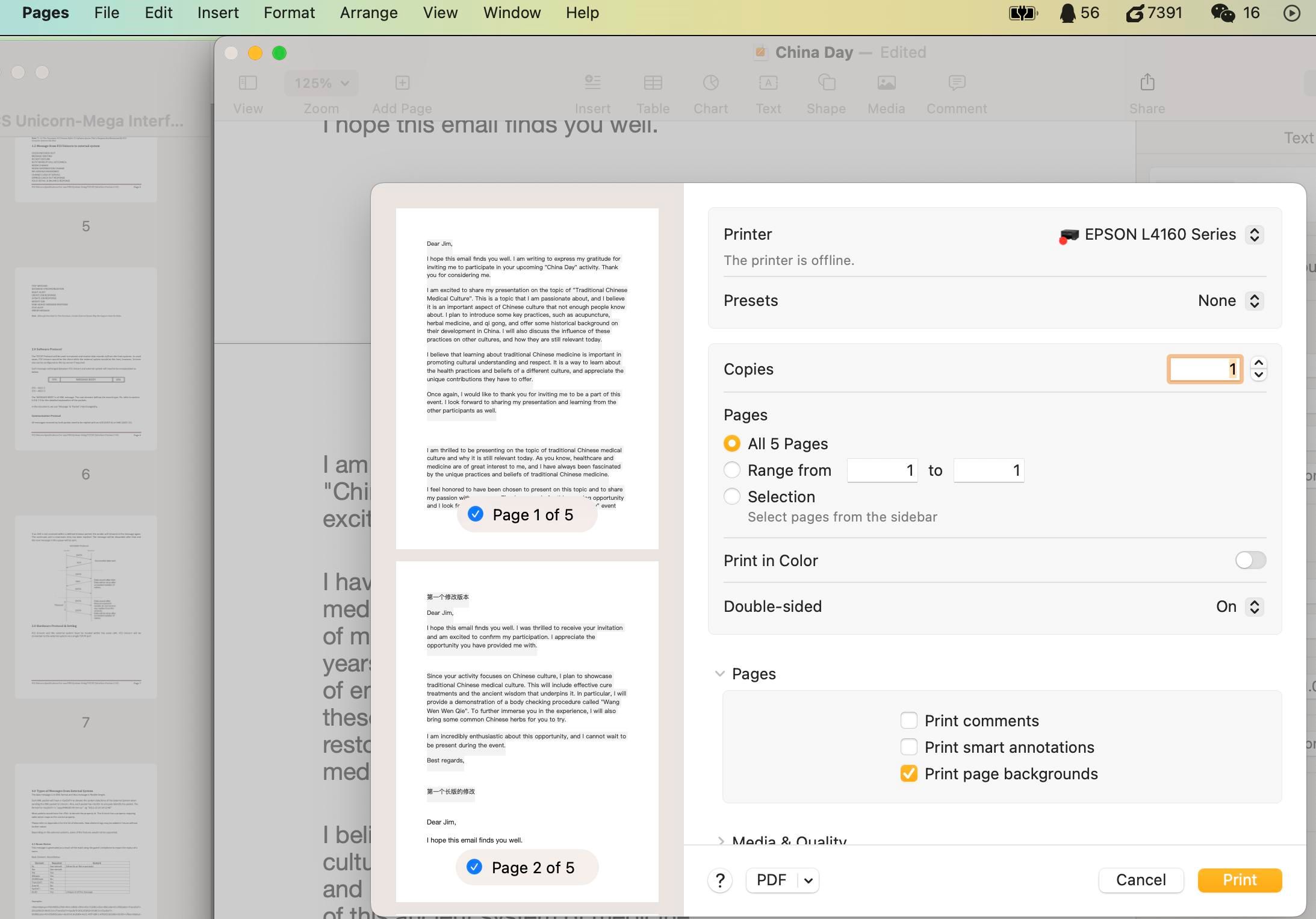
By: Samuel Turner • Articles

By: William Harrison • Articles
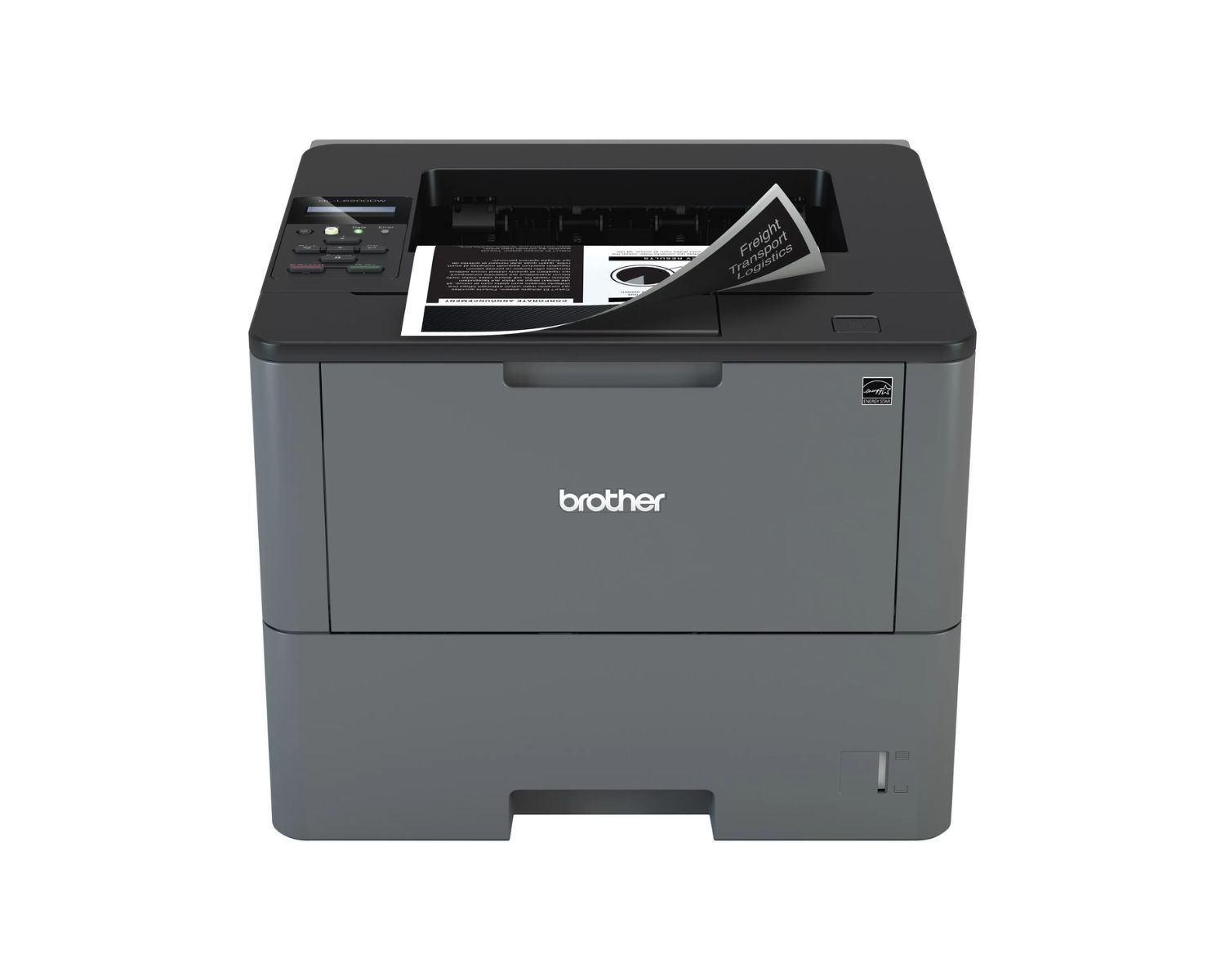
By: Benjamin Parker • Articles
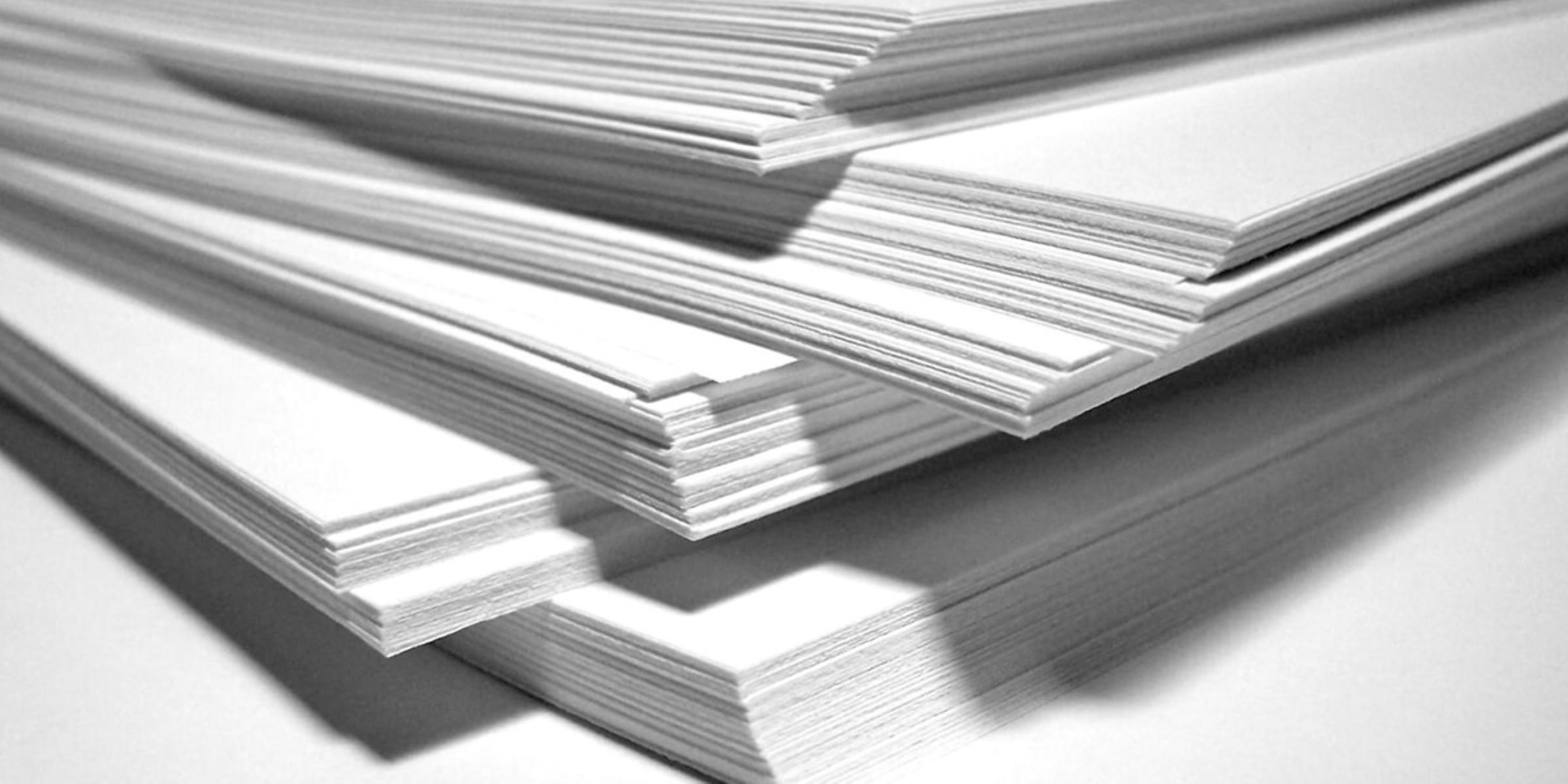
By: Olivia Parker • Articles
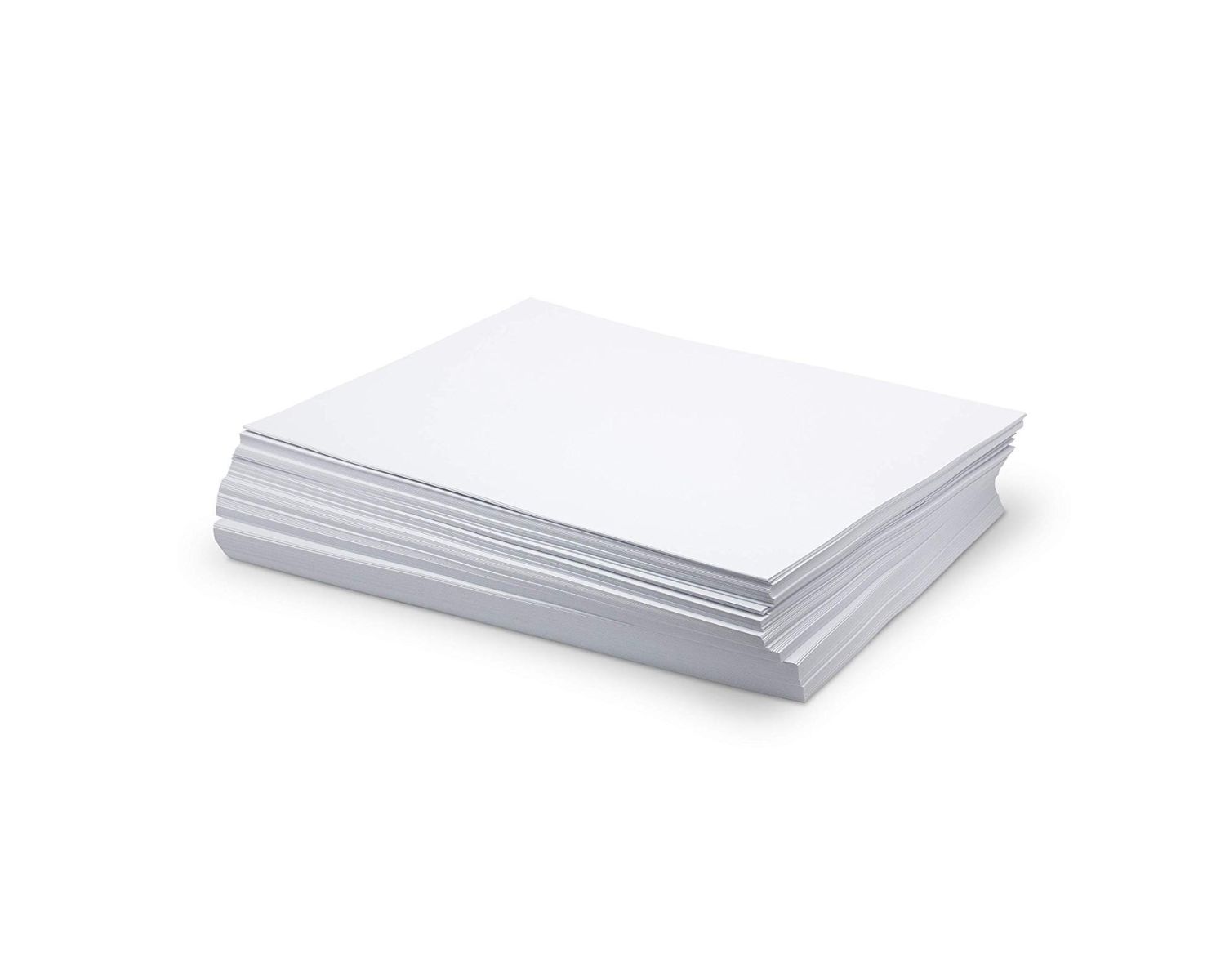
By: Sophia Turner • Articles
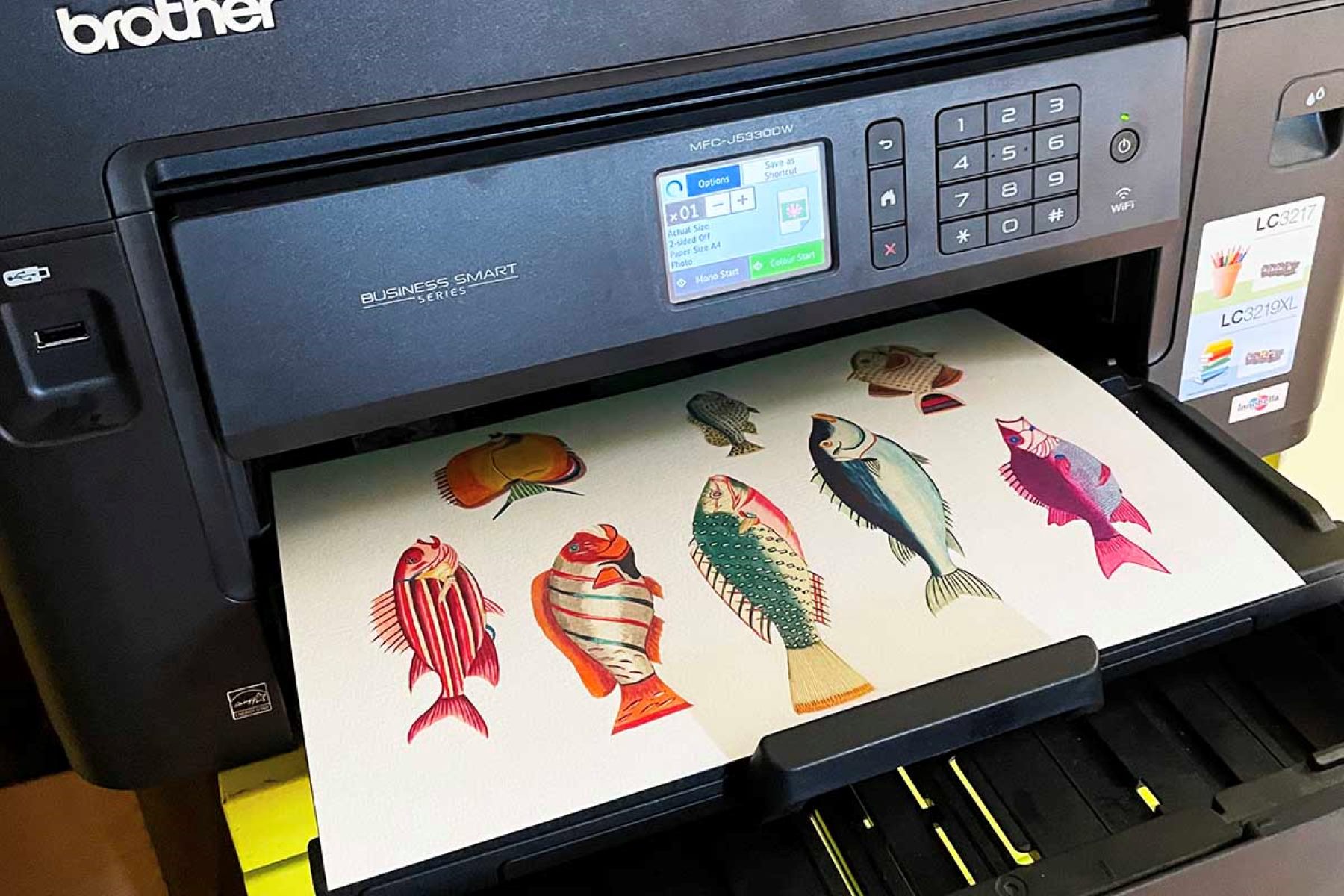
By: Oliver Mitchell • Articles
By: Henry Campbell • Articles
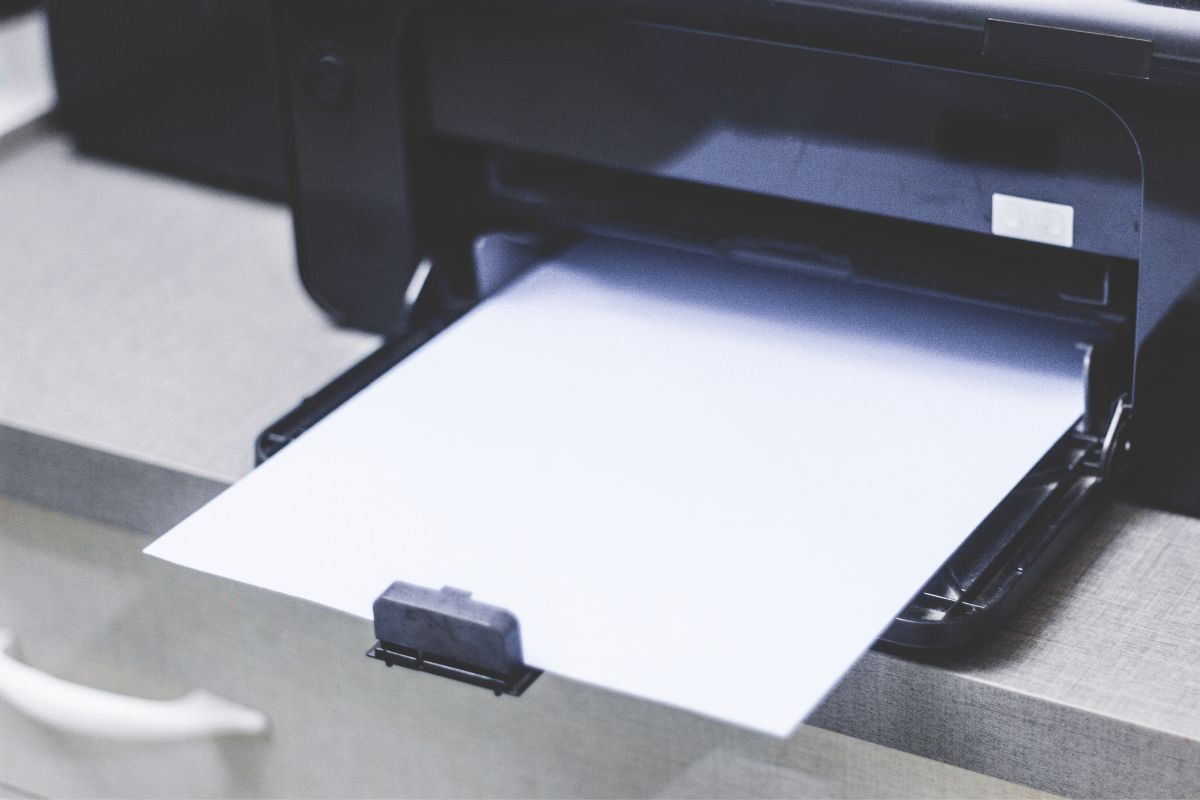
By: Isabella Mitchell • Articles
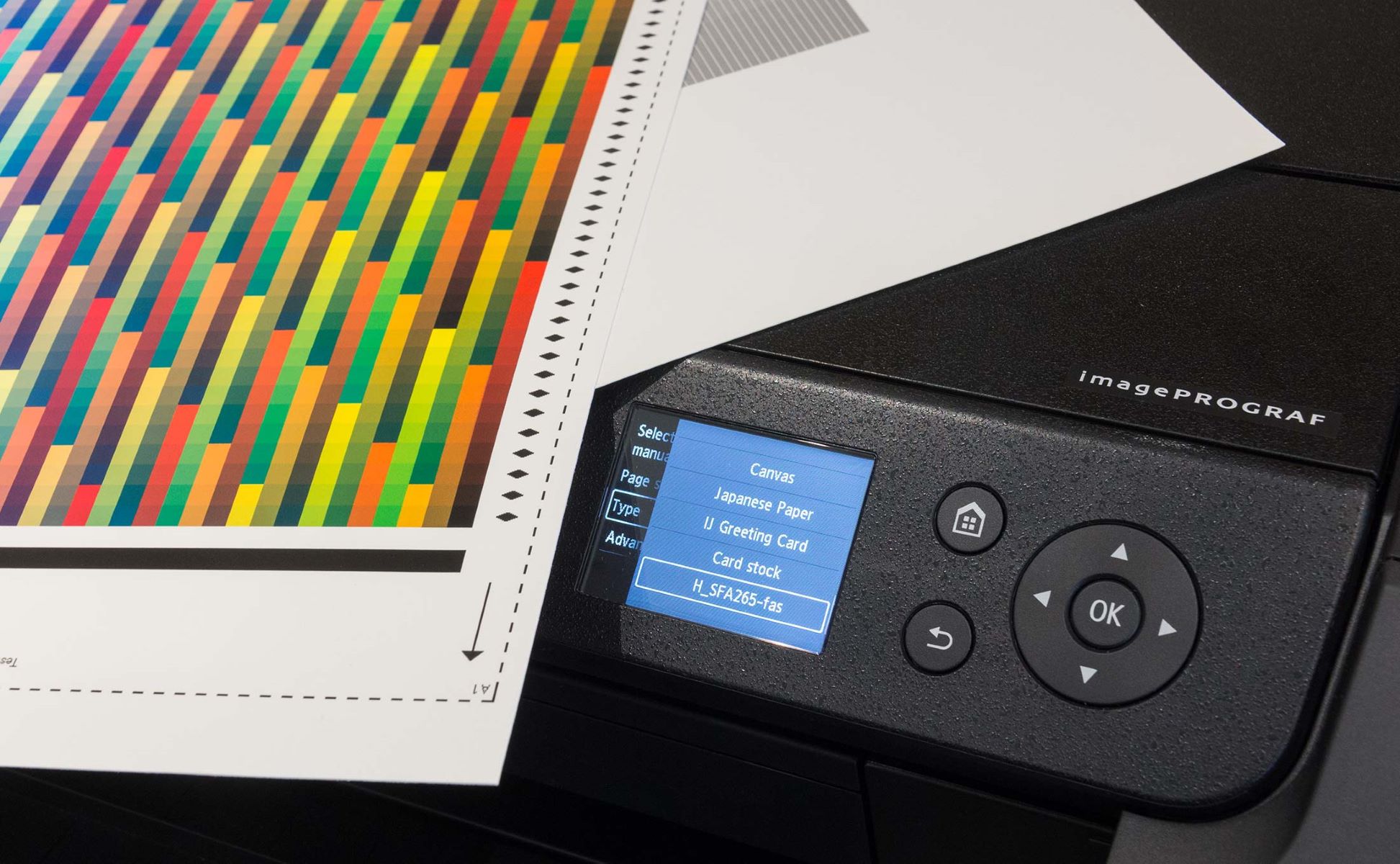
By: Daniel Carter • Articles
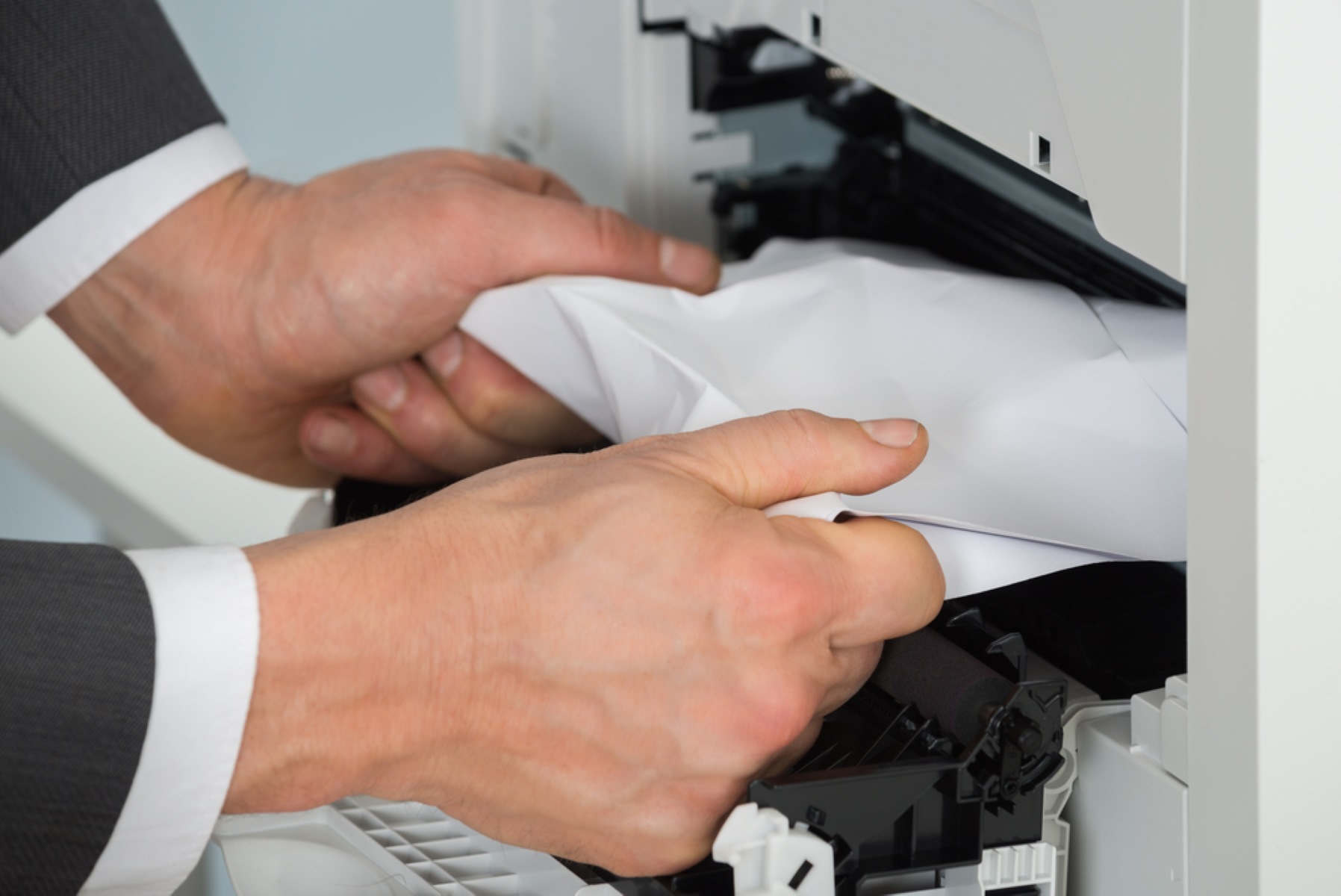
By: Ethan Hayes • Articles
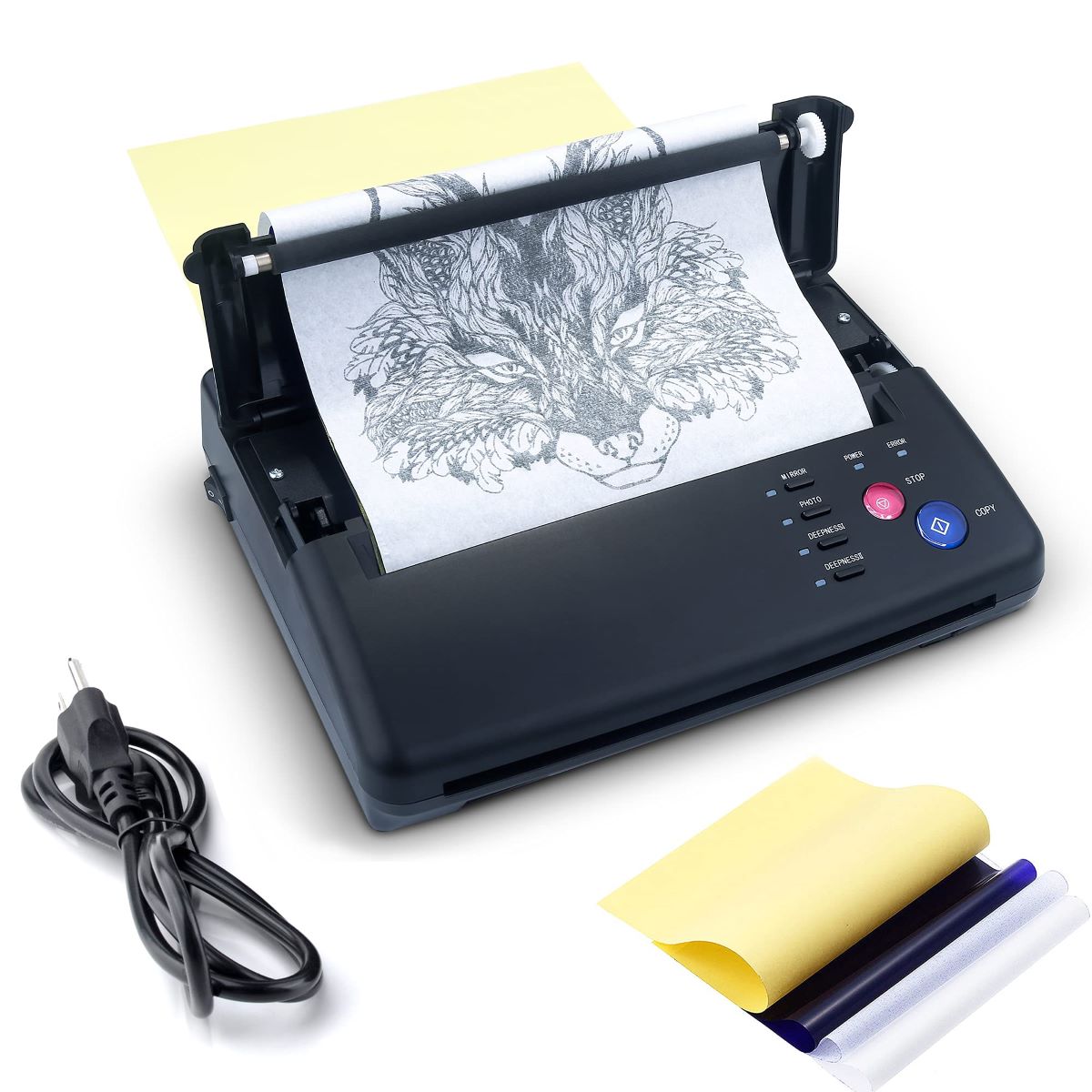
Please accept our Privacy Policy.
STORABLES.COM uses cookies to improve your experience and to show you personalized ads. Please review our privacy policy by clicking here .

- Privacy Overview
- Strictly Necessary Cookies
This website uses cookies so that we can provide you with the best user experience possible. Cookie information is stored in your browser and performs functions such as recognising you when you return to our website and helping our team to understand which sections of the website you find most interesting and useful.
Strictly Necessary Cookie should be enabled at all times so that we can save your preferences for cookie settings.
If you disable this cookie, we will not be able to save your preferences. This means that every time you visit this website you will need to enable or disable cookies again.
- https://storables.com/articles/how-to-store-printer-paper/
Paper and Humidity
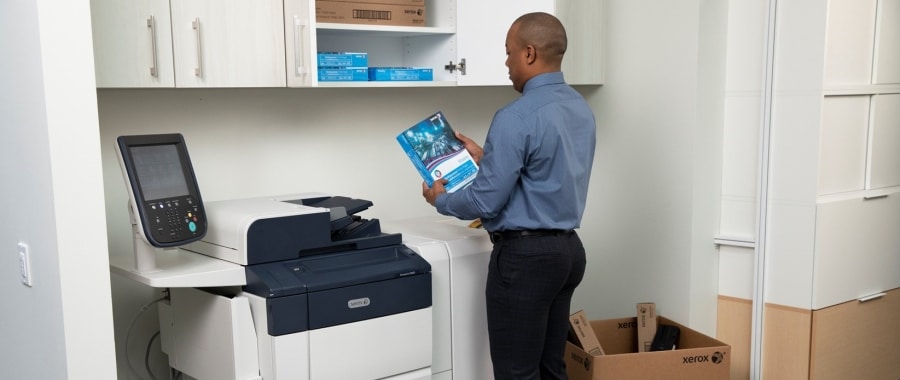
We are happy that it’s summertime with all the joys that brings. It also brings heat and humidity, at times at very high levels. Many people enjoy the heat and look forward to it as they plan for time on the beach. Even high humidity doesn’t deter some folks. That’s not the case for printer paper when it is being stored. High humidity can have a negative effect on paper that will impair your ability to get good prints.
Paper Storage Explained:
Paper is highly sensitive to moisture and the humidity levels within which it is stored. When paper is manufactured, most manufacturers produce paper to strict quality standards including a well-regulated level of humidity of between 25-50%. The paper is then carefully sealed into packaging that contains a special lining for maintaining the humidity level of the paper for as long as it is properly stored. It is then loaded into cases and onto wooden pallets with an even surface for shipping to the customer. Paper shipped in this condition is perfect for xerographic applications, but the freshness of the paper is dependent upon the conditions when stored, waiting to be used.
As paper is made of wood fibers, it exhibits similar behavior as other paper products such as paper towels. As a result, paper that is improperly handled or stored, can be subject to excess moisture from the atmosphere, which can cause the paper to increase in size, warp, curl or stick together.
Paper Storage Issues :
Paper with moisture issues can lead to the following issues:
- Damp paper can warp in tray – Paper that has absorbed too much moisture from the atmosphere can begin to become wavy or warp, starting around the edges of the sheet. Warped paper can jam in the paper tray when attempting to feed from the tray, causing a misfeed, and cause wrinkles during the printing process.
- Dry paper can also warp in tray – Paper that has lost too much moisture can contract around the edges of the sheet causing “tight edges”, which can lead to misfeeds, jams, registration issues as well as wrinkles.
- Damp paper can wrinkle in the paper path – Slightly deformed damp paper can lead to paper wrinkling in the paper path. This can result in wrinkled output, paper jams and lines in prints.
- Damp paper can affect toner bonding to paper – Damp paper can lead to poor toner application to paper and poor fusing, such as light/faded output, smudging or toner rubbing off the page.
- Damp paper may curl – Damp paper may curl more than normal paper would, resulting in curly paper output, or increased instances of misfeeds and paper jams.
- Damp paper may adhere to other sheets – Damp paper may stick to neighboring sheets of paper, becoming difficult to separate and cause misfeeds and jams when multiple sheets of paper are pulled into the printer at once.
Paper Storage Considerations:
Please read this knowledge article which includes paper storage guidelines for the AltaLink C8030/ C8035/ C8045/ C8055/ C8070 printer family and EC8036/ EC8056 multifunction printers:
For all product models:
- Keep paper in its original packaging until ready for use – Paper is packaged in a wrapper lined with polyethylene plastic that is resistant to moisture and maintains the moisture level of the paper inside the package. Also, keep unopened packages of paper stored inside their original cardboard carton whenever possible. Reseal the package if using only a portion of it.
- Do not store paper on or near the floor – Keep the paper away from environments that experience extreme temperature and humidity shifts. Do not store paper flat on the floor as this increases chances of moisture being absorbed into the paper.
- Store paper in a storage cabinet or flat shelf – For paper storage, always keep unused paper in a dry, flat storage cabinet where it can be protected from physical damage and the elements. Always stack the paper evenly on top of the other to avoid curling, bending or damage to the corners of the paper.
- The storage location should be climate controlled – The storage location should also be kept within 68°F/20°C to 76°F/24.4°C and within 35-55% humidity levels for best results. In damp or humid environments, paper, even the paper already loaded into the paper trays, can absorb moisture from the air and become too damp to use.
- Paper must be conditioned before use – If the paper cannot be stored in a climate controlled environment or has not been stored this way, the paper must be given a conditioning period before use in accordance to the temperature and humidity levels at which it was stored. For example, a carton of paper stored in a 57.2 ° F/14 ° C storage room, brought into a 72.5 ° F/22.5 ° C production room must be conditioned for 8 hours before use for best results.
- Use only the amount of paper needed in the tray – When loading paper into the printer, load only the amount of paper that the job requires or that will be used in the short term. Paper inserted into the paper trays will absorb moisture from the atmosphere over time, which can lead to the many damp paper issues listed above.
If you experience one or more of the symptoms described above – paper curling, jamming, paper sticking together – the answer just may be to remove the paper in the paper trays and replace it with a newly opened package of paper that has been properly stored. Humidity levels may have damaged the paper in the trays.
Enjoy the summer and the summer weather. And don’t let it ruin your prints!
Related Posts

Receive Updates
Check your inbox or spam folder to confirm your subscription.
Post A Comment Cancel reply
Your email address will not be published. Required fields are marked *
Notify me of followup comments via e-mail. You can also subscribe without commenting.

/ Resources / Paper Insights Library
/ Ressources / Idées sur papier
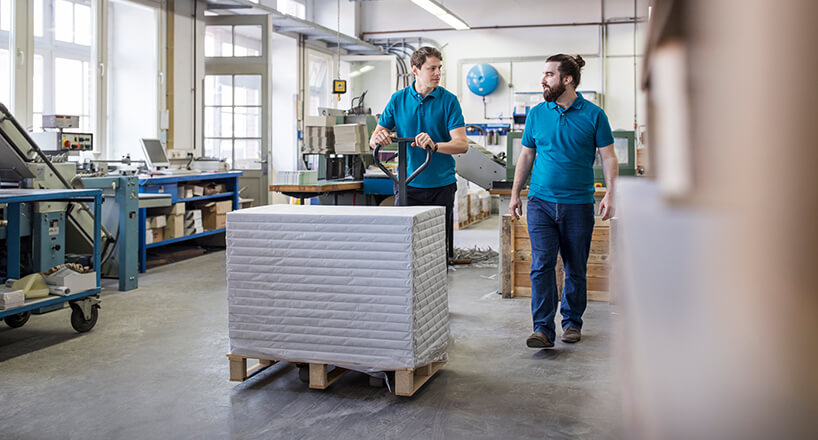
Four Tips for Proper Paper Handling and Storage
Proper paper handling and storage is essential for maintaining the productivity, efficiency and quality output of your commercial printing operation..
When was the last time you thought about paper handling and storage? Chances are, it’s been a while. Many commercial printers use such a high volume of paper that it rarely stays on the shelf or in the warehouse for long. But there are some tips that can protect your valuable paper inventory and minimize waste so your print operations run smoothly.
1. Maintain Moisture Levels
Most of us don’t spend too much time thinking about the moisture level of paper; it’s all dry, right? Actually, just as paper is manufactured in different weights, it also has different moisture levels depending on the intended end use. Paper that becomes more wet or dry than intended can impact print quality.
The edges of paper, where it has been cut, are the most sensitive to moisture, especially if the wrapping is compromised or the paper is left open. Moisture changes can result in wavy or tight edges and may impact the way sheets feed into a press.
In digital printing, the process of putting ink on the paper is governed by an electrical charge that attracts or repels toner, and the moisture level of the paper can affect that charge. In addition, paper that is too dry can build up static, which can cause pages to stick together and feed multiple sheets, creating jams on the printer or press.
Maintain a humidity level between 35–55 percent in all paper handling and storage areas to avoid issues caused by fluctuating moisture levels. You can use humidifiers or dehumidifiers to control the environment in smaller rooms, but larger rooms, like warehouses, can be more challenging.
“I’ve seen some larger press rooms install misting systems at the ceiling that go off at certain intervals to add moisture to the environment,” says Lori Slovik, Domtar’s technology manager, printing papers. “Just be sure not to store paper right underneath the mister.”
2. Beat the Heat
Humidity is important, but so is temperature. Paper should be stored in a controlled atmosphere, preferably at a temperature between 68 and 76 degrees Fahrenheit, whether that’s in a warehouse, an office or a press room. It also should be stored out of direct sunlight, which can impact the temperature of the paper as well as the color.
Extreme temperatures won’t damage paper, but they can create problems during printing. A good best practice is to acclimate paper to the proper temperature in a paper handling or storage area before using it to avoid problems during printing.
“For example, this winter we shipped an order of paper to a plant in Wisconsin where it was -15 degrees outside,” Slovik says. “If you brought that paper right in and started using it in a 70-degree pressroom, the cold paper hitting the warm press would shock the paper, causing wrinkling and poor uniformity of registration.”
A good rule of thumb is to let paper acclimate for at least 24 hours before a job to avoid paper shock, and store it at a consistent temperature after that.
3. Protect the Packaging
Paper is shipped in packaging that has been designed to maintain its ‘as manufactured’ moisture level, which means the best way to keep paper ready to print is to store it in its original packaging until it’s needed.
“We see a lot of Monday morning breakdowns, with people calling in because their copiers are jamming or the toner isn’t transferring uniformly, and that is often due to paper being stored in uncontrolled environments over the weekend,” Slovik says.
This can happen if a printer refills copy machines or presses on a Friday night, but then the climate isn’t regulated over the weekend. Especially during the middle of summer, heat and humidity can affect paper by Monday.
Try to maintain consistent temperatures and humidity levels in all paper storage and handling areas, even when the business is closed.
4. Lay It Flat
In addition to keeping paper wrapped in its original packaging, printers also should store reams flat rather than on end. Not only can this protect the packaging, but it can also help prevent buckling or other edge damage.
If individual reams are stored on shelves, then the shelves should be made of a solid material, rather than wire shelving, to prevent ‘patterning’ on the surface of the paper that is in contact with the shelf. Damaged paper does not feed well and can result in paper jams that will cost the printer time and efficiency.
Following these tips will help to protect your investment in inventory, reduce waste and maintain the quality of print output. Feel free to contact us with any specific questions you may have.
JavaScript seems to be disabled in your browser. For the best experience on our site, be sure to turn on Javascript in your browser.

CALL US TODAY 1-888-544-7171
Shelf Life and Paper Storage Recommendations for Thermal Paper

Regardless of if you are using the paper for OCE wide format printers, or another type, knowing how to store the necessary supplies is a must.
Storing thermal products requires you to make a few special concessions. For example, they need to be kept in dark areas and in a place that has a relative humidity of 45 to 65 percent. The temperature should be kept below 77 degrees Fahrenheit. In most cases, if you can maintain these temperature and humidity requirements, you can expect a satisfactory performance from your thermal paper roll for approximately three years after it has been manufactured.
After you have printed on the thermal paper, it is expected that the image is going to remain legible for a period of at least seven years. This is with the assumption that the document is stored properly and that the above temperature and humidity specifications are maintained.
Fade Resistance
The majority of thermal products utilize co-reactant and dye technology to create the image or text. The combination is sensitive to UV light and may suffer from some image decline if it is continually exposed to office light or sunlight. The stability of the image created is going to depend on the original image developed, the intensity of UV light present, and the individual product design. If the paper is exposed to UV light for a prolonged period of time, sheet discoloration may also occur.
Contact Storage
It is highly recommended that the thermal paper not be exposed to the following materials for best results:
Any type of organic solvent (ethers, esters, ketones, alcohol)
Cleaning fluids
Plasticizers
Petroleum solvents
Carbon papers
Wet-type diazo copy paper
Cast coated papers
Certain oils
Carbonless paper solvents
Other thermal systems
An exception to these general guidelines would be any type of thermal paper that has been specially coated.
The majority of thermal papers, regardless of who manufactured to them, are susceptible to damage from the items listed here. The bottom line is that if you don’t store your thermal paper properly, or if you don’t keep it in the right conditions, issues may arise. The best way to minimize problems is by ensuring the thermal paper is stored properly and that it doesn’t come in contact with any of the items mentioned above.
Share this post
Your Cart Cart
- Remove This Item
- Privacy Policy
- Guarantee Policy
- Free Shipping Terms
- Refund Policy
Contact Info
BuyRolls Inc 13608 W 107th St Lenexa, KS 66215


Book Storage And Humidity – A Brief Q&A
by Conserv | Jul 25, 2023 | Blog , Library Collection

Mold, red rot, insect damage, and corrosion of metal elements can be some of the most concerning forms of deterioration for book collections – and they are all directly or indirectly related to relative humidity levels. As such, relative humidity levels in storage areas are a crucial aspect of maintaining the longevity and integrity of book collections.
As a collections care professional, understanding the relationship between relative humidity and book preservation will be essential for safeguarding your valuable materials. Here are some common questions related to humidity and book storage, so you can make informed decisions for the care of your collections.
Do all books require the same humidity levels?
There is no specific number for the best relative humidity levels, and most institutions do not have the funds to have separate areas for books with different component materials, so ranges can be very useful. Different materials and bindings call for specific humidity ranges to ensure their preservation.
According to the Northeast Document Conservation Center (NEDCC), optimal relative humidity (RH) levels for paper materials lie somewhere between 30% and 50% with a certain preference for the lower end to slow down deterioration reactions. ( NEDCC, 2018 )
The Library of Congress , for example, suggests about 35% RH for works on paper. However, this low RH may not be suitable for all books in your collection. For example, leather-bound books may require higher humidity levels to maintain their flexibility and avoid cracking or tearing (CCI, 2018) .
To determine the ideal relative humidity ranges for your collection, consult guidelines from reputable organizations such as the NEDCC, the Library of Congress, or the American Institute for Conservation (AIC). Remember that books are composite objects made of various materials which must be kept in mind when deciding for environmental parameters.
Also consider that conservators have traditionally adhered to a narrow set of ideal parameters or a golden rule to preserve collections. But recent research has revealed that materials can actually be preserved under a much wider range of parameters. To discover more about the evolution of preservation standards, click here .

Do fluctuating humidity levels affect books significantly?
This depends on how fast the fluctuations happen. Rapid changes in humidity (for example within a single day or a week) can cause significant damage to your collection. Books are hygroscopic, meaning they easily absorb and release moisture from the surrounding environment. When humidity levels fluctuate rapidly, this can lead to physical changes in the materials, such as swelling, shrinkage, and warping ( CCI, 2018 ).
To reduce the impact of fluctuating humidity levels, it is essential to maintain a stable environment. Monitoring and controlling the RH within your storage area is critical. Invest in reliable humidity monitoring equipment, such as a high-quality hygrometer or data loggers, and develop a plan for addressing fluctuations when they occur. Remember to build a good relationship with your facilities staff , so you may collaborate with them and minimize the risk of unexpected fluctuations caused by your mechanical systems or infrastructure.
How are mold and pest problems related to book storage humidity?
High humidity levels can create an ideal environment for mold growth and pest infestations. Mold thrives in humid conditions (65% and above), and if left unchecked, can cause permanent damage to your collection, including staining, weakening, and even disintegration of materials ( Conserv o Gram, National Park Service, 2007 ). Additionally, many pests, such as silverfish and booklice, are attracted to warm, damp environments and may cause further mechanical harm to your books as they graze over the surfaces ( AIC Wiki ).
Maintaining proper humidity levels is one of the most effective ways to prevent these issues. If your storage spaces are in a high-humidity area, and you have little mechanical control over your buildings, try to ensure that your storage area is well-ventilated and monitor humidity levels regularly. Finding pockets of humidity in time or sudden spikes caused by external factors can be essential to preventing a mold problem or pest infestation from getting out of hand. If you suspect either, consult a conservator or pest management professional for guidance on treatment and prevention.
Are dehumidifiers and humidifiers always the solution?
While dehumidifiers and humidifiers can help you control the humidity in your storage environment, they may not always be the best or even the only solution. Depending on the size and layout of your storage area, these appliances may not provide even humidity distribution, leading to pockets of higher or lower RH levels.
Before investing in dehumidifiers or humidifiers, check with colleagues and nearby institutions to see if you can borrow some to test out.
You can also explore other cheaper and more sustainable options for maintaining a stable environment. If you have access to building engineers and facilities staff, ask them about passive methods, such as properly sealing windows and doors, insulating walls and ceilings, and using vapor barriers ( Check out some examples measures taken at the Whitworth , in Manchester, UK). There are also some Open Access articles available online such as this one with useful guidelines to help you achieve passive environmental controls.
Don’t forget that you can always play with the temperature in your rooms in order to affect relative humidity levels. This is called conservation heating and you can read a bit more about it in this article by Sarah Staniforth .
If all fails and active controls are necessary, it is advisable to consult with a specialist to determine the best solution for your specific needs. If you don’t have access to one, don’t forget that the Conserv Community has several members with decades of experience in HVAC engineering and facilities management for museums !
How do I know what’s going on in my storage areas?
If humidity levels are a serious concern for your book storage areas, it is essential that you begin with a monitoring program to find out just how much you need to be concerned. At the simplest level, you may start with a handheld hygrometer and walk around your spaces. These will give you good spot readings, but will not be able to provide a complete picture of what’s going on in your spaces over time due to daily and seasonal fluctuations. To get a fuller picture of the relative humidity levels throughout the days, weeks, or months, it will be better to get automatic data loggers. If this is the first time you will be beginning an environmental monitoring program in your spaces, we recommend first making sure you start by defining your environmental monitoring goals and deciding on how you will collect your data .
For collections care professionals, there are few things more stressful than widespread mold or pest infestations that have been caused by uncontrolled environmental factors such as relative humidity.
We hope this short article on some common questions about relative humidity and book storage help you make informed decisions to improve the longevity and integrity of your collections.
If you have any questions about environmental monitoring, integrated pest management, or just want to talk about preventative conservation, please reach out to us ! Don’t forget to check out our blog or join our community of collections care professionals where you can discuss hot topics, connect with other conservators or even take a course to get familiar with the Conserv platform .
Recent posts

What Do You Know About Museum Security?
by Conserv | Mar 15, 2024
Here are 5 key aspects of museum security you should be aware of when thinking about protecting collections and visitors at collecting institutions.

Traveling Museum Exhibits – Planning, Preparation, And Collections Care
by Conserv | Mar 1, 2024
What does it take to plan and execute successful traveling museum exhibits? Read about all the moving parts before, during and after.

Archive Temperature And Humidity Recommendations
by Conserv | Feb 22, 2024
Are there specific archive temperature and humidity recommendations? In fact, there are several! What are they, and how can we keep track?
- Order by Part #
- Custom Box Builder
- International Orders
- 1.800.448.6160

- Sign In / Create An Account
- Create An Account
- / Guide to Collections Care | Section 1: Archival Storage of Paper
SECTION 1: Archival Storage of Paper
Introduction, selecting storage materials, standards for materials, preparing collections, selecting storage furniture, the storage environment, case studies.
- I: Documents
- II: Oversize Documents
- III: Works of Art
- IV: Pamphlets
- V: Periodicals & Newspapers
- VI: Ephemera
- VII: Books and Other Bound Materials
Documents, manuscripts, prints, drawings, pamphlets, periodicals, newspapers, postcards and ephemera are typically made of paper—an organic substance that is vulnerable to deterioration over time.
All paper will deteriorate if mistreated or stored improperly. Some types of paper are particularly vulnerable—for example, the acidic wood-pulp paper that was produced throughout much of the 19th and 20th centuries. Unlike earlier papers, which were made of higher-quality fibers (commonly called rag papers), wood-pulp papers contain natural impurities and byproducts of the manufacturing process that break down to form acids in the presence of heat, light, and moisture in the air. Pollutants in the air and/or direct contact with poor-quality storage enclosures also cause discoloration and embrittlement of paper.
There are a number of steps that can be taken to preserve vulnerable paper collections. These include providing a cool, dry, clean, dark, and stable environment; protecting collections from disaster; handling collections carefully; choosing appropriate storage furniture; and using protective storage enclosures. Storage enclosures lessen the effects of fluctuations in temperature and humidity and provide protection against abrasion and handling, but they must be strong, durable, and chemically stable so that they do not damage the materials they enclose.
The goal of this section is to provide the background information necessary to select the most appropriate storage systems for flat paper (storage of photographs is addressed in a later section of this publication). It is oriented toward collectors, artists, archivists, and librarians who are new to the field of preservation. No introduction, however, can provide all the answers. If your collections are extensive, in poor condition, or include works of art, it would be advisable to consult a professional conservator. The American Institute for Conservation of Historic and Artistic Works (AIC) provides an online "Find a Conservator" tool that provides the names of conservators in your region.
The information in this section reflects our current understanding of the storage requirements for paper. It will be revised as new information and products become available.
To provide long-term protection, storage containers and enclosures should be made of materials that are strong, durable, and chemically stable. Enclosures and boxes should be tailored to the size, condition, and anticipated use of the objects being enclosed.
TERMINOLOGY
The terms "archival" and "archival quality" are often used to describe storage products, but these are non-technical terms that do not, of themselves, convey any specifics about the suitability of these products for use in preservation. It is important to evaluate the specific characteristics of each product and to choose the appropriate type of product for the item to be stored. For storage materials made from paper and/or board, these characteristics include (but are not limited to) acidity, alkalinity, the presence of lignin, fiber type, and adhesives used. Note that different characteristics apply to plastic storage materials, which will be considered separately below.
Acidity and alkalinity are measured by pH using a logarithmic scale of 0–14. The pH of storage materials made from paper and board should ideally be in the 7–8.5 range.
Paper to be used for storage enclosures should be acid-free. Acid-free storage materials have a pH of 7.0 or higher. It is important to realize that although acid-free materials are not acidic when they are produced, they can become acidic over time. This can be due to internal impurities introduced in manufacturing or to external impurities such as pollutants, which degrade to produce acids.
For this reason, an alkaline reserve or buffer is often added to paper or board during manufacture to neutralize acids that may be produced over time. This alkaline reserve is usually 2-3% calcium or magnesium carbonate. Most paper collections will require buffered enclosures. While an alkaline buffer in storage enclosures is generally desirable, there are a few types of collections that are sensitive to alkaline materials and should therefore be stored in pH-neutral enclosures, not alkaline. These include blueprints and diazo reproductions, works of art with pigments that react to high pH, albums and collages with wool or silk components, and other items that contain animal proteins. Some photographs and textiles may also be alkaline-sensitive; see later sections of this publication for more information on these materials.
Storage materials for paper objects should also be lignin-free. Lignin is a natural component of the cell walls of plants and trees. If it is not removed during manufacture, it can react with light and heat to produce acids and darken paper. Lignin-free actually means low-lignin; lignin-free materials usually have a maximum of 1% lignin.
Other components of paper or board enclosures that should be considered when determining their suitability for long-term preservation include fiber type and adhesives used in the enclosures. While cotton fiber makes the most chemically stable paper and board, it is possible to make high-quality paper and board from wood pulp by using a chemical process that removes impurities (the resulting pulp is usually termed chemical wood pulp or purified wood pulp ). Groundwood pulp (also known as mechanical wood pulp ), on the other hand, is always of poor quality and cannot be used to make suitable enclosures. In addition, adhesives used in enclosures must not discolor, deteriorate, or fail, and they should not discolor or damage adjacent materials.
TYPES OF ENCLOSURES
Boxes: The boxboard used for most document boxes is 60 mils or points (pts.) thick (there are 1000 points in an inch, so 60 pts. is .060 inches thick). Lighter weight stock (40 pt.) is sometimes used for small boxes. Boxes suitable for long-term storage of paper items are available in several types of board, all of which are acid-free, lignin-free and buffered with a pH of 8.0-9.0. Boxes are also available with a polyester film laminate coating (Gaylord Archival® DocuDry™) to resist water damage. All boxes should be sturdy enough to support the contents and have reinforced corners and snug covers that prevent soil and pollutants from entering.
Folder Stock: Acid-free folders of various sizes are available in both buffered and unbuffered stock. The typical weight is 10-pt. with 7-pt. available for lightweight items and 20-pt. for oversized maps and prints.
Interleaving Material: Interleaving sheets are sometimes used to protect paper objects in storage. Tissue, glassine, various types of paper and clear polyester film can be used for this purpose. Acid-free tissue is available with or without an alkaline buffer, as is paper. Glassine is a smooth translucent paper that is not abrasive and can generally be used with friable (i.e., easily crumbled) media such as pastel or charcoal, but it is not very stable. Glassine is acid-free and unbuffered and should be replaced periodically if used. If polyester film is used for interleaving, it should meet the criteria for safety noted below, and it should not be used for items with friable media because of its electrostatic charge.
Mat Board: When matting and framing works of art on paper, conservation mounting/matting board (either a 100% cotton rag board or a purified wood pulp board) must be used both for the backboard and the window mat. For most materials, mat board should be acid-free, alkaline buffered, and lignin-free—with the exception of the alkaline-sensitive materials mentioned earlier. For these materials, an unbuffered 100% cotton rag board is available. Mat board is available in two-, four- and eight-ply thickness. The heavier weights are recommended for oversized documents that need additional support. For hinges used to attach works of art to the backboard, Japanese paper (which is lightweight, lignin-free, and long-fibered) and a starch-based paste are recommended.
Plastic: Clear plastic enclosures are particularly useful for objects that receive continual handling, are too brittle to be handled unprotected, or like postcards, must be browsed to view the images. As noted above, artwork with friable media such as charcoal or pastel should never be placed in plastic because static electricity can lift the image from its support. Remember that plastic enclosures provide no protection from light. All items in clear plastic enclosures should be placed in boxes for long-term storage.
Polyester, polypropylene and polyethylene are the three types of plastic that are suitable for storage of paper objects. They should be uncoated and free of additives. Uncoated archival polyester is recommended because it is very stable. It is used for various types of envelopes, sleeves and folders. Polyester also comes in rolls or precut sheets and is available in thicknesses of 1–5 mil; 2–3 mil is used for average-sized documents, while oversized prints and maps need the extra support of 4–5 mil. Polypropylene is commonly used for containers. Polyethylene is highly flexible but not as clear; it is used for sleeves and bags. Polyvinyl chloride (PVC) enclosures, sometimes referred to as vinyl, are not acceptable for use because they are very unstable.
Documents may also be encapsulated between sheets of polyester using double-sided tape with a 1/4" margin between the document and the tape. However, current research indicates that acidic paper deteriorates more rapidly if sealed in polyester. It is advisable to place sheets of buffered paper behind the documents before putting them in polyester or to consult a conservator about having them deacidified. An alternative to encapsulation, especially suitable for oversized documents, is a folder with a polyester cover sheet.
There is no one standard that specifically governs storage materials for paper objects. The Photographic Activity Test (PAT) is a standardized test that is used to determine whether enclosure materials are safe to use with silver image photographs. It is discussed further in the section on storage of photographs.
Responsibility for adherence to standards rests with the suppliers. Gaylord Archival products are manufactured to the most recent national preservation standards. The company purchases or manufactures materials to standards published by the American National Standards Institute (ANSI), the National Information Standards Institute (NISO), and the International Organization for Standardization (ISO) when available or to industry-wide standards established by national institutions such as the National Archives and Records Administration and the Library of Congress Preservation Directorate. Specification information is available from Gaylord Archival on request.
Once you have selected the appropriate storage materials, the documents and other paper items should be prepared for storage. Always follow proper handling procedures when working with collections. Do not eat or drink around collections. When moving paper documents or artworks, particularly brittle items, support the item carefully from below.
- Remove extraneous materials —paper clips, rubber bands, wrapping material, old folders and any other material that is not pertinent. If foreign matter (such as pressed flowers) must be saved as artifactual evidence, place it in a separate enclosure.
- Unfold and flatten papers wherever possible without causing damage to the folds. Remove letters from envelopes. If the paper is brittle or inflexible, it may need to be humidified before unfolding. Consult a conservator for proper procedures. Prints, drawings, and extremely fragile or valuable items should be treated by a conservator. Once materials have been unfolded, remove surface soil with a soft brush.
- Isolate newsprint because it is highly acidic and will stain adjacent paper. Newspaper clippings can be replaced with photocopies on alkaline paper or placed into a separate envelope. Fax copies are similarly unstable and should be reproduced or isolated.
- Note any badly damaged items, place them in individual folders, and set them aside for professional conservation treatment. Do not undertake any "first aid" unless you have received training and are qualified to do so.
- If it is necessary to place identifying information on the object itself, use a No. 2 pencil and write on the verso or in the lower right margin. Repeat the identification on storage folders and envelopes in pencil or by applying labels. Never use ballpoint or felt-tip pens that might stain or bleed. Never apply labels directly to a document or work of art; labels are intended for boxes, folders and other enclosures.
- To the extent possible, store objects of similar size and weight together. If heavy or bulky items are stored with lighter ones, damage can occur from uneven pressure.
- Label boxes with adequate information about their contents. This curtails unnecessary browsing and rifling through the documents.
Once paper objects have been placed in enclosures and boxes, they must be stored in non-damaging furniture. Wood storage furniture is not recommended because it can emit acids and other harmful substances. It is possible to use a sealant on wood furniture, but this will not provide complete protection, and the sealant itself may emit damaging vapors. Even if wood shelves and drawers have been sealed, they must be lined with a barrier material, such as Marvelseal®, for additional protection.
Metal furniture with a baked enamel coating is acceptable for preservation purposes, but powder-coated steel or anodized aluminum furniture is preferred. As with enclosures, the choice of furniture will depend on the budget and the types of materials in the collection.
Regardless of the type of furniture, it should be appropriate for the types of collections to be stored in it. Open shelving is best for air circulation, although closed cabinets are sometimes needed for security purposes. Shelves should be adjustable, and collections should not protrude off the shelves or be crowded together. The lowest shelf should be 4–6 inches off the floor to reduce the chance of damage from flooding. Specialized furniture that will allow oversize items to be stored flat (e.g., map cases or shelving for oversize boxes) should be used.
A cool, dry and stable storage environment is crucial to the long-term preservation of paper collections. Heat and moisture accelerate the chemical reactions that cause paper to deteriorate, and high moisture levels can result in mold growth. Research has shown that lower temperatures and a lower relative humidity will greatly extend the usable life of paper collections.
Maintaining a stable environment is also very important. While boxes and storage enclosures can provide some protection against short-term environmental fluctuations, they will not protect collections against long-term changes in environmental conditions. Over time, climate fluctuations can cause paper to expand and contract, leading to distortion and weakening of the paper. Research has shown that large and frequent fluctuations, such as those that occur at night and on weekends if climate control systems are turned off or settings are altered, greatly accelerate paper deterioration.
There is no national standard for environmental conditions, but the National Information Standards Organization (NISO) has issued a technical report entitled Environmental Guidelines for the Storage of Paper Records , which gives suggested values for temperature and relative humidity for storage of paper records in libraries and archives. This report recommends a temperature no higher than 70°F and a relative humidity somewhere between 30% and 50% that can be maintained consistently.
Some practical suggestions for keeping the environment moderate and stable include: using portable dehumidifiers and air conditioning units in summer to lower humidity; lowering heat levels in winter to prevent humidity from becoming extremely low; and avoiding storage of collections in basements or attics where climate extremes tend to occur.
It is a good idea to monitor the climate in storage areas to ensure that it remains moderate and stable. Monitoring instruments ranging from humidity indicator cards to hygrothermographs and data loggers are available. See the NEDCC publication for more information on choosing an appropriate monitor and implementing an environmental monitoring program.
Selecting specific enclosures and boxes requires careful consideration. Physical condition, size of collection, anticipated use, and budget all play a part in the final choice. The second half of this section will present several case studies to show how products available from Gaylord Archival can be used to solve the storage needs of paper collections.
CASE STUDY I: DOCUMENTS
Scope: Documents, Manuscripts and Papers (letter or legal size)
A. Select appropriate primary enclosures that will protect the contents and allow them to be removed for use without damage. The size should be larger than the unfolded sheets so that edges don't protrude and become damaged.
Be aware that envelopes containing paper collections should not be interfiled with book collections, because envelopes do not provide sufficient support for the items stored inside. If pamphlets or groups of documents must be shelved with books rather than in boxes, the items should be placed in pamphlet binders ( see Case Study IV ).
- Papers that are strong, flexible and of similar size can be placed directly into acid-free folders. The number of items per folder depends upon the thickness of the paper, the condition of the paper and the nature of the document. For example, a single folder can be used to house one valuable print, 10–15 older manuscripts or 50 modern office records. Providing adequate protection is the primary concern. Folders come with and without reinforced tabs, in letter and legal sizes, with full, half, third or fifth cut tabs.
(a) File folder inserts or slings - Insert the item into a paper folder (aka file folder insert) or envelope sling before placing it into a folder. Paper folders can also be used to group papers instead of using staples or paper clips, which can be damaging.
Individual polyester enclosures - These provide fragile or small items with protection from handling while retaining visibility.
Interleaving with 20 lb. buffered paper - This protects documents from adjacent material and provides support during handling, especially for oversized documents. Objects can be removed from folders by lifting the larger interleaving sheets beneath them. Use interleaving paper, envelopes or folders to separate valuable documents from highly acidic materials such as newsprint, or replace newspaper clippings with photocopies on alkaline paper.
- Paper envelopes can also be used to organize collections. Short- or long-side opening envelopes can house groups of papers or thin pamphlets on sturdy paper. Envelopes must be large enough for items to be easily inserted and removed without abrading the edges. If fragile papers or pamphlets are to be stored in an envelope, they must first be placed in a paper folder or envelope sling.
- Groups of items can be placed into larger enclosures, depending on the size of the collection, where it will be stored and how it will be used. Expanding folders are good for interim storage of collections that are growing rapidly, such as children's artwork or active correspondence.
B. Place folders and envelopes in sturdy boxes. Storage boxes should be strong, have reinforced corners, and match the size of the enclosures. To the extent possible, store items of similar size and weight together. Heavy or bulky items can damage lighter items stored in the same box.
If there are not enough folders to fill a box, use an adjustable spacer to hold the folders upright and prevent them from slipping or sagging.
- Flat storage in drop-front storage boxes is sometimes appropriate, but also has some disadvantages. It gives overall support, prevents damage from slumping, and protects edges of brittle documents—but documents on the bottom of the box can be distorted by pressure from the items above, particularly if items in the box are different sizes and weights. If flat boxes are used, they should have drop-front construction to make safe removal of folders easier. They should be stacked no more than two high.
- Another acceptable storage alternative for paper documents is storage in a file cabinet with hanging folders. Acid-and lignin-free buffered hanging folders are available. Depending on how many items are in each folder, one or more folders may be placed in each hanging folder.
C. Large collections of office records should be stored in record storage cartons. These are available in buffered and unbuffered board. The unbuffered cartons should be used only for short-term storage. Cartons must be strong and easy to transport.
CASE STUDY II: OVERSIZED DOCUMENTS
Scope: Documents, Papers, Maps, Posters and Ephemera (larger than legal size)
A. Select primary enclosures that provide adequate support. Folders are available in large sizes and should be made of heavier 10 or 20-pt. folder stock (instead of 7 or 10-pt.). Likewise, 4 mil polyester film or a combination of 2–3 mil for the front sheet and 5 mil for the back sheet should be used if oversized documents must be encapsulated.
Sheets should be sorted and grouped by size, if possible. Place no more than 10–12 sheets into a folder. See page 4 for advice about interleaving, which is recommended to support fragile oversized items. Remember that certain types of oversize documents (e.g., blueprints and diazo reproductions) will need acid-free rather than buffered folders because of their sensitivity to alkalinity. If you buy both types of folders, be sure they are clearly labeled and staff knows when to use each type.
Storage/display folders with polyester cover sheets allow the contents to be viewed without damage and provide a backing of buffered material. These are more expensive, but worth the investment if the oversized items are fragile, valuable, or handled frequently. Remember, however, that these should not be used for artwork with friable media that may be lifted off the support by the plastic.
B. For small collections, folders may be stored flat in drop-front storage boxes. Because of their weight, boxes should be stored no more than two high. Another option is the Ackley Filing System which consists of corrugated boxes, file folders, L-sleeves and box labels, and is designed for horizontal or vertical storage of large documents.
C. Large collections of oversized maps, posters, and architectural drawings are best stored inside folders in metal flat files. Shallow drawers 11/2 inches deep are preferable so that the folders on the bottom are not crushed. See page 6 for general information about storage furniture. As with storage in boxes, folders should be sized to fit the drawer, and all folders should be the same size.
D. Use rolled storage when items are too large for flat files, as long as the items are flexible enough to withstand rolling and unrolling. Although flat storage is always preferable, it is not always possible. Rolled storage is a better alternative than sectioning maps or creasing drawings.
Use an acid-free tube that has a diameter of 3" or more and is several inches longer than the largest item being rolled. Depending upon their size and condition, 1–6 items can be wrapped around the outside of a tube with interleaving between individual items. The image should face the inside so that it is not exposed to light. The rolled document should be wrapped on the outside with acid-free paper or polyester wider than the document and secured with flat unbleached cotton tying tape (min. 5⁄16" wide). If the item is a blueprint, the wrapping paper or tissue should be unbuffered. A roll storage box will provide added protection.
CASE STUDY III: WORKS OF ART
The storage of prints and drawings is outside the scope of this pamphlet. If your collection includes such work, your storage needs should be reviewed by a conservator. In the interim, separate the items and follow these guidelines.
A. Store artwork flat. If possible, place each item in its own folder or place interleaving paper between each work of art to protect the surface. Remember that artwork with friable media such as charcoal or pastel should never be placed in plastic because static electricity can lift the image from its support. Place folders in clamshell or drop-front storage boxes.
B. For long-term storage of prints and drawings, conservators recommend window mats. These should be stored flat in reinforced boxes. For a description of procedures, see the AIC brochure and Matting and Framing for Art and Artifacts on Paper and How to Do Your Own Matting and Hinging in the NEDCC publication.
C. Matted artwork requires sturdy boxes that can support the extra weight of the mats. Their inner depth should be only 11⁄2 or 2 inches, again to keep the weight manageable.
CASE STUDY IV: PAMPHLETS
Scope: Single Signature Pamphlets and Small Booklets
A. Pamphlet binders with four-flap inner enclosures provide maximum protection from abrasion when items are inserted and removed. Most pamphlet binders can be stored upright, provided there is adequate support from adjacent volumes.
B. Envelopes may also be used for pamphlets, but fragile pamphlets require the protection of a paper folder or envelope sling before being placed into the envelope. Choose envelopes that are large enough to allow the pamphlet to be inserted and removed without damage. If items in envelopes need to be shelved with books, use envelope storage binders or Pocket Binders to provide support.
C. If envelope storage binders are not used, envelopes should be stored in boxes. Use an adjustable spacer for partially filled boxes. Pamphlet boxes with flip tops (or crocodile boxes) provide upright storage. Average sized pamphlets can also be treated like documents and placed in file folders in pamphlet boxes. This treatment is typically used when the pamphlets are part of a larger archival collection.
D. Open pamphlet files are suitable for temporary storage only. They allow easy retrieval, but do not provide adequate mechanical support for long-term storage, nor do they protect items from light and fluctuations in the environment.
CASE STUDY V: PERIODICALS & NEWSPAPERS
Scope: Unbound Periodicals & Newspapers
A. Collections of periodicals and newspapers should be stored flat in sturdy boxes because of their size and weight. The box depth should be shallower for contents that are heavy. When in good condition, issues can be placed directly into boxes. Polyester sleeves are available in large format sizes for newspapers and will provide long-term protection in flat storage. Adjustable spacers should be used to avoid slippage and sagging.
B. Single issues of average size may be treated as pamphlets .
C. Thin and fragile items require additional protection. They should be inserted into folders and envelopes before being put into boxes.
D. Polyethylene bags provide temporary protection, especially when the items are subjected to excessive handling. Collectors and dealers may find these particularly useful. However, given the evidence that acidic paper appears to deteriorate more rapidly when encapsulated, it is not advisable to use sealed bags for permanent storage of acidic materials. If comic books must be stored so that they can be viewed, polyethylene envelopes with buffered stiffener boards are available.
E. Open pamphlet files may be used for short-term storage of periodicals in good condition. The files allow easy retrieval, but they do not provide adequate support for long-term storage, nor do they protect periodicals without enclosures from light and dust.
CASE STUDY VI: EPHEMERA
Collections of paper ephemera provide the greatest challenge of all. Often size varies, the paper stock is poor, and people want to see the object itself. Common ephemera include postcards, greeting cards, brochures, and stereo views.
A. Collections of ephemera can be stored according to the recommendations for archival documents and pamphlets (see Case Studies I and IV). Before being placed in folders, fragile or small items should be placed in paper folders, envelope slings, or individual polyester enclosures for protection. Polyester enclosures are useful for any items that will be frequently handled. Where possible, ephemera should be sorted and stored by type and size, to prevent damage due to differing sizes and weights.
B. Collections of materials in a single format can be stored in polyester envelopes in appropriately sized boxes.
C. Albums and scrapbooks made of stable materials are another alternative for ephemera collections, especially for private collectors. A variety of 3-ring albums with plastic album pages and scrapbooks and scrapbook pages made from non-damaging materials are available.
Never attach ephemera with pressure-sensitive tapes, rubber cement, or damaging glues. Individual items can be attached to acid-free or buffered mounting paper using photo corners.
When objects have been mounted onto pages, they can be placed into polyester page protectors (sealed on one side), polyester sheet pockets (sealed on three sides), or polypropylene sheet protectors (sealed on three sides). Alternatively, polypropylene pages with various sizes of individual pockets are available; these are designed for popular sizes of photographs, but may also be appropriate for small ephemera. If an ephemera collection includes photographs, remember that any enclosures or pages that are to be used with photographs must pass the Photographic Activity Test.
CASE STUDY VII: BOOKS AND OTHER BOUND MATERIALS
Scope: Valuable and fragile books and other bound materials that require protection.
Book bindings are intended to protect the textblock, but sometimes the bindings themselves are so fragile or valuable that the books themselves require protective enclosures. Examples include: rare books that need additional protection against environmental pollution and light; fragile books that cannot stand upright on a bookshelf without sustaining damage; brittle books with loose pages; and damaged books that need temporary protection until a conservator can review and treat them. As more and more libraries rely on off-site storage, sturdy enclosures are also needed to protect items in transit.
Following are several options for protecting books and other bound materials. Ideally, enclosures should be custom-fit so that the items are not damaged by being jostled in the boxes. If a custom-made box is not possible, acid-free tissue paper can be used to fill the box around the volume.
A. Custom-sized rare book boxes provide maximum protection. Gaylord carries a selection ranging from prescored folder stock enclosures for lightweight books to sets of acid-free corrugated board that can be scored to create rare book boxes that are custom fit for larger or heavier books. A third alternative is a premade rare book clamshell storage box that comes with a supply of unbuffered tissue to wrap the book and gold title labels for the outside of the box.
B. Tying and wrapping are less expensive options. These are short-term solutions for items that need repair or treatment by a conservator. They also provide protection for less valuable items that are being sent to off-site storage. Wrap book in acid-free tissue or wrapping paper and tie with cloth pull fasteners or cloth tying tape.
C. Phase boxes are the traditional storage containers for library books. Gaylord Archival provides all the materials required to make phase boxes, including 60 pt. blue/grey board, washers and rivets.
D. Book jackets provide effective protection for book covers that are either valuable or vulnerable. Examples include books with modern dust jackets in private collections, bindings that would be damaged by fingerprints, and deteriorated leather bindings with "red rot*" that could spread to adjacent books. Custom-sized polyester jackets can be made for hardcover books from archival polyester. Do not use glue to attach the jacket cover to your book. If you use tape to attach the covers, apply from cover to cover. Do not apply tape to the bookbinding itself.
*Red rot is a disintegration of the leather into a red powder. Gaylord Archival carries the product Cellugel that consolidates the rotted leather so that the deteriorating book cover may safely be handled without danger of breathing the loose leather dust or soiling hands and clothes. However, it is recommended that you consult with a professional conservator on the proper use of Cellugel. In the interim, cover with a archival polyester book jacket cover, as described above, or isolate the book in a separate rare book storage box.

- University of Texas Libraries
- UT Libraries
Storage and Care of Architectural Records
- Temperature and Relative Humidity
- Storage, Use and Handling
- Disaster Prevention, Preparedness, and Response
- Information and Granting Resources
- Preservation Support Organizations
- Professional Organizations
Temperature and Relative Humidity (RH)
Drier conditions will reduce the flexibility of materials resulting in: difficulty opening books and and unrolling papers; shrinkage and separation of adhered materials; increased cracking of brittle paper, wood, and paint. More humid conditions will increase the potential for mold outbreaks and increase the rate of acid hydrolysis of paper and plastics. Be aware that photographic materials benefit from cooler, drier conditions than exist in a working environment. If the photographic or other collections are not accessed often, consider creating or sharing in an alternate storage space where the temperatures can be held at lower temperatures and relative humidity and more tightly controlled. Materials which are accessed from cold storage should be allowed to come to equilibrium with the climate of the working environment before they are used.
- Last Updated: Aug 26, 2021 12:28 PM
- URL: https://guides.lib.utexas.edu/StorageCare

Search Google Appliance
Environment.
Maintaining an appropriate environment is a fundamental aspect of preservation. Temperature, relative humidity, pests, and air quality can all have a significant impact on the lifespan of collections.
Temperature and Humidity
Controlling temperature and relative humidity is crucial for archival collections. Inappropriate levels of either contribute significantly to the deterioration of materials. Heat increases chemical reactions that breakdown media. High relative humidity can encourage mold growth and pest activity, while low relative humidity can lead to desiccation and embrittlement. The recommended environmental standard for paper-based collections is 35-65°F and 30-50 percent relative humidity (RH). However, different materials may require different standards .
The Archives provides cool and frozen storage for selected photographic and film-based collections. In November 2015, over 3 million photographic negatives were moved to a new state-of-the-art facility at the (SISC) in Hyattsville, Maryland. The storage facility consists of two units that maintain different environments. Glass negatives, color photographic prints, compact discs (CDs) , and magnetic video tapes are stored at 52°F (11°C) and 30 percent RH. Film-based materials, such as reels and still image negatives, are stored at 26°F (-3°C) and 30 percent RH. In addition to the storage at SISC, the Archives also has an on-site freezer for frequently accessed microfilm collections, and for the treatment of pests found in collections. The freezer is maintained at 18°F (-8°C).
Contact DR. DEWPOINT ℠ 24/7/365
Send message
Direct Reaction Team
We are ready to respond on short notice to ensure that real estate and other property restored to its origins in the fastest possible way. We do a quick assessment of the damage to be able to take the right actions.
Contact our US office
Your questions and comments are important to us. please send us your information with a description of your needs and we will connect with you promptly..
Polygon US Headquarters 15 Sharpner’s Pond Road, Building F North Andover, MA 01845 Phone: 1-800-422-6379
See all our US locations here: Polygon US office locations
For global support, please contact one of our offices listed here: Our Global offices - Polygon Group
Thanks for your email, we will get back to you shortly!
I consent to Polygon collecting my personal information in order to contact me. Polygon handles all personal data according to the General Data Protection Regulation (GDPR)
You are now leaving Polygon Restoration's website and will be directed to another country in the group. Do you want to proceed?
The Effects of Humidity in Paper Production
As a cellulose product, paper is naturally hygroscopic, making it dimensionally unstable and vulnerable to temperature and humidity changes. In attempt to reach an equilibrium state with its surroundings, paper collects and releases moisture, which may affect its flatness, dimensions, strength, performance, conductivity and fold. The material only reaches an equilibrium state when it neither absorbs nor loses moisture in an environment. Fortunately, it is possible to manipulate and control an environment using humidity control for paper production. By understanding how humidity affects paper and pulp production, you can prevent costly problems and better ensure customer satisfaction.
Humidity and Paper
The relative humidity is the amount of water that air holds at a certain temperature. Absolute humidity is the quantity of water vapor in a sample of air. As the temperature in the air increases, so does its ability to retain moisture. Similarly, cooled air loses its ability to retain as much moisture. Despite temperature changes, cooled air can retain the same absolute moisture as heated air, but will experience an increase in relative humidity levels. Paper relative humidity, or paper RH, is the relative humidity level in the air in which the paper does not give off or absorb moisture.
The environment within a paper production facility is the primary factor that affects paper’s moisture content. The ideal relative humidity level for a production facility is a debated subject among industry professionals because the ideal level depends on a facility’s geographic location and the season. Since papermakers can’t produce paper with relative humidity levels that function well in all environments, they must produce a paper that accommodates most environments. In general, the best environment for a paper mill to promote equilibrium is one that has relative humidity levels of 40 to 50 percent and a temperature of 72°F. However, factors such as fiber, fillers, adhesives, and manufacturing techniques affect how paper responds to atmospheric conditions.
The Effects of Dry Conditions on Paper Production
Low relative humidity levels in paper mills can cause paper fibers to lose moisture and curl, shrink and lose dimensional stability quickly. Sometimes the damage to the paper is not apparent until the second passing through a press or the sheeting stage, when the paper’s tension loosens, allowing the fibers to change shape and develop tight edges. At low relative humidity levels, paper is also susceptible to fold cracking and static electricity, which can cause packing issues, such as feeding and jamming problems.
The Effects of Too Much Humidity on Paper Production
When relative humidity levels exceed 65 percent, the cellulose fibers in the paper draw in moisture in as little as 30 seconds. As a result, the fibers increase in size and may make sheets of paper limp or their edges appear wavy. Because of the manner in which paper fibers are in alignment with machinery, the greatest changes in a dimension generally occur along the across-grain dimensions, making the environment that paper is exposed to between processing steps critical. High relative humidity levels can also lead to warping, wrinkling, and mold growth.
Understanding how paper interacts with its environment is critical to ensuring its appearance and performance. Because of atmospheric changes that occur throughout the seasons, HVAC units often do not control conditions appropriately or uniformly. The best way to promote equilibrium in paper fibers is to control the relative humidity levels and temperatures in the processing and storage environments using temporary climate control solutions from Polygon. These solutions improve production efficiencies and the quality of paper while reducing waste. Because engineers customize the equipment to your facility’s exact needs, the systems complement existing monitoring and control devices, improve humidity control, save energy and reduce operating costs. Get in touch with Polygon today to learn more about simplifying humidity control for your paper production operations.
[ Austin Granger via CC License 2.0 ]

Related articles

Optimizing indoor conditions for gummy manufacturing

What can food production facilities expect when working with Polygon?

Polygon safety record recognized by Highwire

IMAGES
VIDEO
COMMENTS
The maximum recommended temperature for paper storage is 75 degrees Fahrenheit, though some experts recommend a high temperature of 65 degrees. Video of the Day. It's probably not a disaster if papers are stored somewhere that occasionally gets a little warmer, but ideally, they'll be kept at lower temperatures for long-term storage.
The storage location should be climate controlled - The storage location should also be kept within 68°F/20°C to 76°F/24.4°C and within 35-55% humidity levels for best results. Paper must be conditioned before use - If the paper cannot be stored in a climate-controlled environment, the paper must be given a conditioning period.
The ideal temperature for paper storage varies between 18° and 22° C and relative humidity (RH) should sit between 40 and 55%. If we consider that relative humidity (RH) is generally quite high throughout Australia, in some cases reaching 65 to 80%RH, then relative humidity is an important consideration when storing hygroscopic and moisture ...
8. Limit Exposure to Air: Minimize the exposure of your paper documents to air, as it can contribute to deterioration. Seal documents in acid-free folders or sleeves to reduce air exchange. Avoid storing papers in plastic bags or wrap, as they can trap moisture and lead to mold growth.
1. Choose a Low Humidity Storage Area: Opt for a storage area with low humidity levels. The ideal humidity range for storing printer paper is between 45% and 55%. High humidity levels can lead to increased moisture absorption and potential damage to the paper. Avoid storing paper in basements, garages, or areas prone to condensation. 2.
The storage location should be climate controlled - The storage location should also be kept within 68°F/20°C to 76°F/24.4°C and within 35-55% humidity levels for best results. In damp or humid environments, paper, even the paper already loaded into the paper trays, can absorb moisture from the air and become too damp to use.
2. Beat the Heat. Humidity is important, but so is temperature. Paper should be stored in a controlled atmosphere, preferably at a temperature between 68 and 76 degrees Fahrenheit, whether that's in a warehouse, an office or a press room. It also should be stored out of direct sunlight, which can impact the temperature of the paper as well as ...
Shelf Life. Storing thermal products requires you to make a few special concessions. For example, they need to be kept in dark areas and in a place that has a relative humidity of 45 to 65 percent. The temperature should be kept below 77 degrees Fahrenheit. In most cases, if you can maintain these temperature and humidity requirements, you can ...
Book storage humidity is a key element in prolonging the life of any collection of volumes for generations to come, learn more here. Platform. Overview; ... (NEDCC), optimal relative humidity (RH) levels for paper materials lie somewhere between 30% and 50% with a certain preference for the lower end to slow down deterioration reactions. (NEDCC ...
Taking care when handling any collection item is one of the more effective, cost-efficient, and easily achieved preservation measures. Take proper care when handling flat works on paper by: Having clean hands and a clean work area. Keeping food and drink away. Using pencil, not ink, to make any necessary marks or inscriptions; in addition, only ...
Relative humidity should be between 40 and 55 percent. Air quality is also an important factor when storing documents. It's crucial to ensure proper ventilation in a storage space to prevent the buildup of harmful compounds, such as dust, nitrogen oxide, ozone, formaldehyde, sulfur dioxide, volatile organic compounds, and carbon monoxide ...
The information in this section reflects our current understanding of the storage requirements for paper. It will be revised as new information and products become available. ... Environmental Guidelines for the Storage of Paper Records, which gives suggested values for temperature and relative humidity for storage of paper records in libraries ...
Acceptable temperatures for storing collections in a working environment range from 65-70° Farenheit with levels of relative humidity in the range of 45-50%. These conditions can be most evenly maintained in inside rooms, away from heat sources such as heating pipes and radiators, windows and exterior walls.
The recommended environmental standard for paper-based collections is 35-65°F and 30-50 percent relative humidity (RH). However, different materials may require different standards. The Archives provides cool and frozen storage for selected photographic and film-based collections. In November 2015, over 3 million photographic negatives were ...
Cold storage with controlled humidity is sometimes advisable for remote storage or little-used materials. When materials are taken out of cold storage, however, the radical, rapid temperature changes they experience may cause condensation on them. ... It is important to note that temperature and relative humidity requirements of non-paper-based ...
The storage location should be climate controlled - The storage location should also be kept within 68°F/20°C to 76°F/24.4°C and within 35-55% humidity levels for best results. Paper must be ...
Nitrate film: has many storage requirements beyond temperature and humidity. Please contact RX if identified. To slow the rate of change it is recommended that color prints identified as significant should be kept in cold storage. 32º F. This will prevent the accumulation of damaging moisture from micro-conden sation that can occur during freeze
The ideal level of relative humidity is between 50 and 60," suggests Goldstein. He says the minimum relatively for all printers is 35 to 40 percent. "Maintaining the correct level of humidity dramatically extends the life of the printhead and maintains the quality of the paper. The optimum RH for enhancing comfort and suppressing dust is 60 ...
The Effects of Too Much Humidity on Paper Production. When relative humidity levels exceed 65 percent, the cellulose fibers in the paper draw in moisture in as little as 30 seconds. As a result, the fibers increase in size and may make sheets of paper limp or their edges appear wavy. Because of the manner in which paper fibers are in alignment ...
storage conditions (temperature, humidity and other factors) are regulatory requirements for maintaining their quality. Storage requirements are established in relevant regulatory legal acts and guidelines for manufacturers, wholesale organizations, pharmacies [[1]-[5]]. In addition, Guidance WHO
20) procedure and conditions for the disposal or destruction of a medical device. 5. Technical documentation for a medical device to conduct in vitro diagnostics, in addition to the information specified in paragraph 4 of these Requirements, shall contain: description of the intended use of a medical device, including: description of the target ...
The paper identifies the key issues concerning design and calculation of energy efficient windows of high-rise buildings that should be considered at the initial stages of a building design. The analysis of the functional and technical requirements which must be met by window structures in high-rise buildings was performed. The features of wind ...
Long-term data storage has specific requirements for software and methods of data storage and conversion. The paper introduces criteria for evaluating software tools in the context of their application in longitudinal studies in psychology. The study is devoted to the analysis of popular tools of psychological